How the User Journey Impacts Your Success
User journeys play a large role in business success. Learn what a customer journey map should include, read examples, and discover how to improve your customers' experience.
A user or customer journey, sometimes visualized as a journey map, is the path a person follows as they discover a product, service, or brand, learn about it, consider spending money on it, and then make a decision to purchase—or not. Not every user journey ends in a conversion, but it is typically the goal.

Creating a customer journey map can help drive sales, because when you better understand your user's journey, you can provide the information or encouragement they need to commit and become a customer.
Let's look at a couple of examples of user journeys.

User Journey Example: Under-caffeinated Chuck
Chuck is downtown and he wants a cup of coffee. His journey might look something like this:
- Chuck feels drowsy on the way to work and realizes that he wants coffee. He is in a downtown area and has several choices.
- He looks around and sees a local cafe with organic fairtrade coffee, a cheap coffee chain that also offers donuts, and another internationally franchised cafe known for their sustainably grown coffee.
- He considers distance from his current location, expected prep time, his budget, and his values—he appreciates both sustainable agriculture and supporting local businesses.
- He knows that 2 or the 3 options offer coffee that match his ethics about food, and although the franchised cafe with sustainable coffee is slightly closer, he prefers going to the local cafe where he can also do more to boost his city’s economy. The local cafe is also typically faster because it’s less crowded.
- He chooses the local cafe with sustainably sourced coffee.
This is a straightforward example of a user journey. A more in-depth example might include asking an employee for information or, if the journey is entirely online, searching for information, looking up reviews, comparing the competition, and considering the cost.
How to create an accurate user journey
To map an accurate customer journey, you need to know your customers and how they discover your brand. To create customer profiles, begin by learning about the demographics of customers who already shop with your brand. This profile is an outline of your target customer’s interests, pain points, income level, age range, location, and more. The entry point is where they become aware of your brand. In the 2 examples above, both had street-level entry points, but other entry points include online searches, word-of-mouth recommendations, as well as social media, television, and print ads.
Consider all the entry points that might lead customers to your brand. Then generate user journeys from those points using your customer profiles to target similar audiences. After that, you'll need to refine your journey maps to turn shoppers into buyers.

Your goal is to guide your potential customers along their journey as much as possible. This will also help you reduce or eliminate barriers to conversion like by answering questions, making the right offers, and providing clarity when it’s needed.
The stages of the user journey
Each user journey is unique. But no matter what customer profile you're dealing with, or what their point of entry is, the structure of all customer journeys has stages in common:
Consideration
Your goal at each of the first 3 phases of the journey is to improve the chances of purchase and retention. Every point on the journey has a connection to every other point, especially when the goal is to motivate and maintain customer loyalty and drive customers through retention and back through the whole process again.
In the awareness phase, the user learns about or is reminded of your product or service, usually as a response to something they need or desire. The awareness phase can follow a previous purchase, which means that the retention phase was a success, leading them around to begin the cycle again.
Here, the user looks at the virtues and the flaws of your brand and any other brands also up for consideration. This is when pricing, value, customer service, branding, communication, and other factors come into play.
At this point, the user has looked at the relevant differences among the available options. If there's any information about your product or service that the customer hasn't been able to find at this point, it could mean losing the sale.
Here, the user either makes a purchase or doesn't. But this isn't the end of the journey—keep in mind that they may be buying from you because another brand is not available to serve their needs at the moment. This is your chance to curry favor with such customers: Your e-commerce platform should be easy to navigate, your customer service should be on point, and any discounts you may have on offer should be extended.
Now that a customer has purchased from you, you want to retain their loyalty. It's a good idea to check in with them after their purchase: Ask for feedback, tell them about complementary products or updates to your services, and try to discover ways to increase their satisfaction in the future. When they reenter the awareness phase, you want positive interactions and friendly and complete customer service to follow them into the next round of consideration.
How to improve a user’s journey
The key to getting the most out of the user's journey is to know your customer as well as possible. This is why a customer profile and all the possible entry points into the journey are important to understand as you define your customer journey . You want an extensive, complete, and accurate profile of the various kinds of people who shop for the products or services you offer.

You need to consider possible entry points into the user's journey. Here’s an example: A woman named Carla is in search of new headphones. She knows that she could travel to her local mall to search for just the right pair, and then she wouldn’t have to wait for them to be delivered. But she also knows that by shopping online, she can more easily compare more options. In this example, a business that sells headphones would need to consider all of the paths that Carla may take to find their products. She could visit a store where they are sold, she might search online, or she might find the right pair through an ad on social media or an email promotion.
The customer profile, the entry point into their journey, and what you have on your shelves (whether brick-and-mortar or online) should all flow together to make a coherent experience for each potential customer.
Build user journey maps
A user journey can be mapped with flow charts or diagrams that take the needs, wants, and habits from a given customer profile and trace a journey from entry point and awareness to retention and back through again. Ideally, you want a journey map for each user starting at each possible point of entry. You're going to need several versions of each user journey map, with different paths based on entry point, previous purchases, email engagement, and so on.
Your goal is to be able to anticipate and answer questions a customer might have before they move on to make a purchase. After they've made a purchase, you want to make sure that the retention phase directs them back to the beginning of the journey. It's all about communication—you need to keep in touch to let them know how you can meet their needs, promote new products or services you have on offer, and get them hooked via rewards and discounts.
That's where Mailchimp's Customer Journey Builder comes in. Mailchimp is an all-in-one marketing and e-commerce platform, allowing you to send marketing emails, newsletters, product and service updates, and everything else you need to keep your customers engaged and satisfied. With Mailchimp, you can also create your business website, employing best practices that will help you turn potential customers into brand-loyal repeat customers. Remember, the customer journey doesn't have to end with the purchase, and Mailchimp is here to make sure it doesn't.

Keep customers coming back for more with Mailchimp’s free Customer Retention Kit
Whether you’re looking to improve existing strategies or seeking fresh insights into who your customers are, this kit is a comprehensive collection of resources designed to cultivate lasting relationships with valued customers.
Fill out the form below to receive your free Customer Retention Kit
By signing up, you are agreeing that we can use your email address to market to you. You can unsubscribe from marketing emails at any time by using the link in our emails. For more information, please review our privacy statement .
Related Topics
- Email Automations
- CRM Automations
- Transactional Email
- Map Customer Journeys
- Get started Get started for free
Figma design
Design and prototype in one place

Collaborate with a digital whiteboard

Translate designs into code

Get the desktop, mobile, and font installer apps
See the latest features and releases
- Prototyping
- Design systems
- Wireframing
- Online whiteboard
- Team meetings
- Strategic planning
- Brainstorming
- Diagramming
- Product development
- Web development
- Design handoff
- Product managers
Organizations
Config 2024
Register to attend in person or online — June 26–27

Creator fund
Build and sell what you love
User groups
Join a local Friends of Figma group
Learn best practices at virtual events
Customer stories
Read about leading product teams
Stories about bringing new ideas to life

Get started
- Developer docs
- Best practices
- Reports & insights
- Resource library
- Help center
How to create an effective user journey map

No matter what you’re working on, the key to customer satisfaction and business growth is understanding your users. A user journey map helps you uncover pain points, explore the touchpoints from their perspective, and learn how to improve your product.
Imagine you just launched a new ecommerce platform. Shoppers fill their carts with products, but they abandon their carts before checkout. With a user journey map, you can pinpoint where the customer experience is going wrong, and how to enable more successful checkouts.
Read on to find out:
- What is a user journey map, and how it captures user flows and customer touchpoints
- Benefits of user journey mapping to refine UX design and reach business goals
- How to make user journey maps in five steps, using FigJam’s user journey map template
What is a user journey map?
Think about the path a user takes to explore your product or website. How would you design the best way to get there? User journey maps (or user experience maps) help team members and stakeholders align on user needs throughout the design process, starting with user research. As you trace users' steps through your user flows, notice: Where do users get lost, backtrack, or drop off?
User journey maps help you flag pain points and churn, so your team can see where the user experience may be confusing or frustrating for your audience. Then you can use your map to identify key customer touchpoints and find opportunities for optimization.
How to read a user journey map
Most user journey maps are flowcharts or grids showing the user experience from end to end. Consider this real-life journey map example of a freelancing app from Figma's design community. The journey starts with a buyer persona needing freelance services, and a freelancer looking for a gig. Ideally, the journey ends with service delivery and payment—but customer pain points could interrupt the flow.
Start your user journey map with FigJam
5 key user journey map phases.
Take a look at another Figma community user journey template , which uses a simple grid. Columns capture the five key stages of the user journey: awareness, consideration, decision, purchase, and retention (see below). Rows show customer experiences across these stages—their thoughts, feelings, and pain points. These experiences are rated as good, neutral, and bad.
To see how this works, consider a practical example. Suppose a new pet parent wants to learn how to train their puppy and discovers your dog-training app. Here's how you might map out the five key user journey stages:
- Awareness. The user sees a puppy-training video on social media with a link to your product website. They're intrigued—a positive experience.
- Consideration. The user visits your product website to preview your app. If they can't find a video preview easily, this could be a neutral or negative experience.
- Decision. The user clicks on a link to the app store and reads reviews of your app and compares it to others. They might think your app reviews are good, but your price is high—a negative or neutral experience.
- Purchase. The user buys your app and completes the onboarding process. If this process is smooth, it's a positive experience. If not, the customer experience could turn negative at this point.
- Retention. The user receives follow-up emails featuring premium puppy-training services or special offers. Depending on their perception of these emails, the experience can range from good (helpful support) to bad (too much spam).
2 types of user journey maps—and when to use them
User journey maps are helpful across the product design and development process, especially at two crucial moments: during product development and for UX troubleshooting. These scenarios call for different user journey maps: current-state and future-state.
Current-state user journey maps
A current-state user journey map shows existing customer interactions with your product. It gives you a snapshot of what's happening, and pinpoints how to enhance the user experience.
Take the puppy training app, for example. A current-state customer journey map might reveal that users are abandoning their shopping carts before making in-app purchases. Look at it from your customers' point of view: Maybe they aren't convinced their credit cards will be secure or the shipping address workflow takes too long. These pain points show where you might tweak functionality to boost user experience and build customer loyalty.
Future-state user journey maps
A future-state user journey map is like a vision board : it shows the ideal customer journey, supported by exceptional customer experiences. Sketch out your best guesses about user behavior on an ideal journey, then put them to the test with usability testing. Once you've identified your north star, you can explore new product or site features that will optimize user experience.
How to make a user journey map in 5 steps
To start user journey mapping, follow this step-by-step guide.
Step 1: Define user personas and goals.
Gather user research and data like demographics, psychographics, and shopping behavior to create detailed customer personas representing your target audience. In your dog-training app example, one key demographic may be parents. What’s their goal? It isn't necessarily "hire a puppy trainer"—it could be "teach kids how to interact with a puppy."
Step 2: Identify customer touch points.
Locate the points along the user journey where the user encounters or interacts with your product. In the dog training app example, touchpoints might include social media videos, app website, app store category search (e.g., pets), app reviews, app store checkout, in-app onboarding, and app customer support.
Step 3: Visualize journey phases.
Create a visual representation of user journey phases across key touchpoints with user flow diagrams , flowcharts , or storyboards .
Step 4: Capture user actions and responses.
For each journey stage, capture the user story: at this juncture, what are they doing, thinking, and feeling ? This could be simple, such as: "Potential customer feels frustrated when the product image takes too long to load."
Step 5: Validate and iterate.
Finally, show your map to real users. Get honest feedback about what works and what doesn’t with user testing , website metrics , or surveys . To use the dog-training app example, you might ask users: Are they interested in subscribing to premium how-to video content by a professional dog trainer? Apply user feedback to refine your map and ensure it reflects customer needs.
Jumpstart your user journey map with FigJam
Lead your team's user journey mapping effort with FigJam, the online collaborative whiteboard for brainstorming, designing, and idea-sharing. Choose a user journey map template from Figma's design community as your guide. With Figma's drag-and-drop design features, you can quickly produce your own professional, presentation-ready user journey map.
Pro tip: Use a service blueprint template to capture behind-the-scenes processes that support the user journey, bridging the gap between user experience and service delivery.
Ready to improve UX with user journey mapping?
User Journey
.png)
Relevant templates
A user journey is the path a person takes when interacting with a product or service, from initial engagement to the desired outcome. It's a critical aspect of user experience design and optimization.
Meaning of User Journey in Agile and Why It's Useful
In the realm of Agile development , the concept of a User Journey takes on a particular significance. A user journey in Agile refers to the path a user follows while interacting with a product or system, emphasizing their experiences, interactions, and emotions at each stage of the journey.
It serves as a valuable tool for Agile teams as they work to deliver customer-centric solutions efficiently. Let's delve into why user journeys are useful in Agile methodologies.
Understanding User Needs
One of the core principles of Agile development is prioritizing customer needs and delivering value to them. By mapping out user journeys, Agile teams gain deeper insights into how users engage with a product or system.
This understanding helps identify pain points, user preferences, and opportunities for improvement.
Aligning Development with User-Centric Goals
User journeys provide a clear visual representation of the user's path, enabling Agile teams to align their development efforts with user-centric goals. When everyone on the team has a shared understanding of the user's perspective, it becomes easier to make decisions that prioritize features and improvements that matter most to users.
Enhancing User Stories and Features
In Agile, user stories and features are the building blocks of development. User journeys complement these by providing a broader context. They help in breaking down user stories into smaller, actionable tasks and ensure that the team remains focused on delivering features that contribute to a seamless user experience.
User Journey vs. User Flow
While user journeys and user flows are related concepts, they serve different purposes in Agile development.
A user journey is a high-level view of the user's interactions and experiences throughout their engagement with a product or system. It focuses on the user's emotions, goals, and key touchpoints.
User flows, on the other hand, are more detailed and specific. They outline the precise steps a user takes to complete a particular task or achieve a specific goal within the product or system. User flows are often used to design and optimize individual processes, such as a sign-up process or a purchase flow.
User Journey Examples
Let's explore a few examples of user journeys to illustrate their practical application:
E-commerce User Journey
Goal: Purchase a product online
- User lands on the e-commerce website.
- User searches for a product or browses categories.
- User selects a product and adds it to the cart.
- User proceeds to the checkout process.
- User provides shipping and payment information.
- User reviews the order and confirms the purchase.
- User receives an order confirmation.
Social Media User Journey
Goal: Share a post on a social media platform
- User logs into the social media platform.
- User navigates to the "Create Post" or "Share" option.
- User types or uploads content.
- User adds tags or mentions other users (if desired).
- User selects the audience (public, friends, etc.).
- User clicks "Post" to share the content.
How Usersnap Templates Can Help with User Journey Mapping
User journey mapping often involves visual representations and collaboration among team members. Usersnap offers templates and tools that streamline this process in Agile development.
Collaborative Features
Usersnap's collaboration features allow Agile teams to work together in real time on user journey maps. Team members can add comments, annotations, and feedback directly to the maps, facilitating communication and decision-making.
Feedback Collection
Usersnap's feedback widgets can be embedded in the product or system, enabling users to provide feedback at specific touchpoints in their journey. This feedback is invaluable for Agile teams looking to improve the user experience continuously.
In conclusion, user journeys are a fundamental concept in Agile development, enabling teams to gain insights into user experiences, align development efforts with user-centric goals, and enhance user stories and features.
When used in conjunction with tools like Usersnap, the process becomes even more efficient, collaborative, and user-focused, ultimately leading to the creation of products and systems that delight users and drive success.
Relevant terms

Skip navigation

World Leaders in Research-Based User Experience
User journeys vs. user flows.

April 16, 2023 2023-04-16
- Email article
- Share on LinkedIn
- Share on Twitter
User journeys and user flows are both UX tools that capture how people accomplish goals with certain products or services. They share some similar traits. Both user journeys and user flows are:
- Used during design ideation or evaluation activities for the purpose of understanding and optimizing experience.
- Structured around a user goal and examined from the perspective of the user or customer (not a company or product).
- Captured and communicated via UX- mapping methods .
Their main distinction, however, is the level of detail and focus for each: User journeys describe a user’s holistic, high-level experience across channels and over time. User flows zoom in to describe a set of specific, discrete interactions that make up a common user pathway through a product.
In This Article:
What is a user journey, what is a user flow, combining user journeys and user flows, comparison: user journeys vs. user flows.
User journey: (Or customer journey) A scenario-based sequence of the steps that a user takes in order to accomplish a high-level goal with a company or product, usually across channels and over time.
The underlying goal of a user journey is high-level. Describing the journey will involve understanding the experience of a user across many points of interaction, because, in a journey, users might use with multiple channels or sources of information.
Consider a new-patient journey as an example. For any person finding and evaluating a new doctor, there will be many touchpoints over a long time (days, weeks, or months): researching information on the practice’s website, calling to schedule an appointment, receiving email communications, visiting the physical office, accessing information in a patient portal, and following up via phone if necessary.

Because of the complexity of the journey, contextualizing these actions with information about users’ emotions and thoughts can be useful for analyzing and optimizing the experience.
Journey maps are a common artifact for visualizing journeys, as they are narrative and descriptive. Effective journey maps don’t just relay the steps taken to achieve a goal; they tell a user-centered story about the process.

The best research methods for journey mapping are usually context methods , such as field studies and diary studies , which uncover longer-term user goals and behaviors in the moment. These methods can be combined with user interviews to uncover first-hand frustrations and needs.
Definition: A user flow is a set of interactions that describe the typical or ideal set of steps needed to accomplish a common task performed with a product.
Compared to a user journey, the underlying goal of a user flow is much more granular, and the focus is narrowed to a specific objective within one product.
Some appropriate goals to capture in user flows might be: purchasing a tennis racket on a sporting goods site, signing up for email updates on a credit-score-monitoring application, or updating a profile picture on a company’s intranet. These goals can be accomplished in the short-term (minutes or hours, at the most), and with a relatively limited set of interactions.
User flows can be represented with artifacts such as low-fidelity wireflows , simple flow charts, or task diagrams. These maps capture key user steps and system responses; they do not contextualize the process with emotions and thoughts like a journey map does.

The best research method for obtaining the data to map user flows is usability testing , which allows us to watch users interacting directly with the product in directed scenarios. As with user journeys, tools that capture analytics (e.g., click heatmaps) are a useful secondary source of insights.
It’s often useful to capture both user journeys and user flows and combine them to understand both macro- and micro-level views of experience. User flows can be thought of as a deep dive into specific areas of the high-level user journey.
For example, let’s go back to the high-level activities that make up the new-patient journey described earlier. Some of those activities entail using digital products (e.g., researching information on the practice website, accessing results in the patient portal). By documenting the associated user flows for these goals, we could further understand the micro-level experience in context of the greater journey.

Unfortunately, most teams do not have systematic processes in place to connect these views, due to gaps in internal team structures, lack of holistic measurement programs, or plain lack of capacity and competency to do the work.
The main differences between user journeys and user flows are captured in the table below:
To determine whether a user journey or a user flow is best for your specific context, consider the following questions:
- Does your user process involve more than one channel or more than one, known product (e.g., your company’s website)? User journeys are best for capturing activities dispersed over multiple channels; user flows are well-suited for interactions within one product.
- Can users generally accomplish the goal in minutes or hours, at the most, or will they need to complete activities over days, weeks, or months? User journeys are better for communicating activities over longer periods of time; user flows are better for relatively short-term goals.
- Will it be critical to understand not only the actions but the emotions and thoughts of users across more complex decision-making? User journeys capture those; user flows are limited to sequences of steps, with no additional information about users’ emotional states.
Related Courses
Journey mapping to understand customer needs.
Capture and communicate UX insights across complex interactions
Customer-Journey Management
Establish and operationalize journey-level experience design work across functional groups for continuous improvement
Omnichannel Journeys and Customer Experience
Create a usable and cohesive cross-channel experience by following guidelines to resolve common user pain points in a multi-channel landscape
Interaction
Related Topics
- Customer Journeys Customer Journeys
Learn More:

UX Roadmaps Common Questions
Sarah Gibbons · 5 min

Discovery Mapping Methods
Maria Rosala · 3 min

UX Roadmaps in 6 Steps
Sarah Gibbons · 6 min
Related Articles:
Understanding User Pathways in Analytics
Page Laubheimer · 7 min
Why Map in Discovery: 3 Mapping Methods
Maria Rosala · 7 min
How Much Time Does It Take to Create a Journey Map?
Kate Kaplan · 5 min
Journey-Mapping Impact: Research Findings
Alita Joyce · 5 min
How Practitioners Create Journey Maps: Typical Uses, Roles, and Methods
Kate Kaplan · 6 min
Cognitive Maps, Mind Maps, and Concept Maps: Definitions
Sarah Gibbons · 7 min
- User Experience (UX) Testing User Interface (UI) Testing Unified User Testing Ecommerce Testing Remote Usability Testing User Experience (UX) Research About the company ' data-html="true"> Why Trymata
- Usability testing
Run remote usability tests on any digital product to deep dive into your key user flows
- Product analytics
Learn how users are behaving on your website in real time and uncover points of frustration
- Research repository
A tool for collaborative analysis of qualitative data and for building your research repository and database.
See an example
Trymata Blog
How-to articles, expert tips, and the latest news in user testing & user experience
Knowledge Hub
Detailed explainers of Trymata’s features & plans, and UX research terms & topics
Visit Knowledge Hub
- Plans & Pricing
Get paid to test
- For UX & design teams
- For product teams
- For marketing teams
- For ecommerce teams
- For agencies
- For startups & VCs
- Customer Stories
How do you want to use Trymata?
Conduct user testing, desktop usability video.
You’re on a business trip in Oakland, CA. You've been working late in downtown and now you're looking for a place nearby to grab a late dinner. You decided to check Zomato to try and find somewhere to eat. (Don't begin searching yet).
- Look around on the home page. Does anything seem interesting to you?
- How would you go about finding a place to eat near you in Downtown Oakland? You want something kind of quick, open late, not too expensive, and with a good rating.
- What do the reviews say about the restaurant you've chosen?
- What was the most important factor for you in choosing this spot?
- You're currently close to the 19th St Bart station, and it's 9PM. How would you get to this restaurant? Do you think you'll be able to make it before closing time?
- Your friend recommended you to check out a place called Belly while you're in Oakland. Try to find where it is, when it's open, and what kind of food options they have.
- Now go to any restaurant's page and try to leave a review (don't actually submit it).
What was the worst thing about your experience?
It was hard to find the bart station. The collections not being able to be sorted was a bit of a bummer
What other aspects of the experience could be improved?
Feedback from the owners would be nice
What did you like about the website?
The flow was good, lots of bright photos
What other comments do you have for the owner of the website?
I like that you can sort by what you are looking for and i like the idea of collections
You're going on a vacation to Italy next month, and you want to learn some basic Italian for getting around while there. You decided to try Duolingo.
- Please begin by downloading the app to your device.
- Choose Italian and get started with the first lesson (stop once you reach the first question).
- Now go all the way through the rest of the first lesson, describing your thoughts as you go.
- Get your profile set up, then view your account page. What information and options are there? Do you feel that these are useful? Why or why not?
- After a week in Italy, you're going to spend a few days in Austria. How would you take German lessons on Duolingo?
- What other languages does the app offer? Do any of them interest you?
I felt like there could have been a little more of an instructional component to the lesson.
It would be cool if there were some feature that could allow two learners studying the same language to take lessons together. I imagine that their screens would be synced and they could go through lessons together and chat along the way.
Overall, the app was very intuitive to use and visually appealing. I also liked the option to connect with others.
Overall, the app seemed very helpful and easy to use. I feel like it makes learning a new language fun and almost like a game. It would be nice, however, if it contained more of an instructional portion.
All accounts, tests, and data have been migrated to our new & improved system!
Use the same email and password to log in:
Legacy login: Our legacy system is still available in view-only mode, login here >
What’s the new system about? Read more about our transition & what it-->
What is a User Journey? Definition, Examples, Monitoring and Best Practices
What is a User Journey?
A user journey is defined as a holistic representation of a user’s interactions with a product, service, or system throughout their entire experience with the company or brand. It encompasses the various touchpoints from initial awareness to post-interaction, providing insights into user behavior, needs, and emotions at each stage.
The journey typically starts with the user becoming aware of the product or service, followed by a consideration phase where they evaluate options. The decision phase marks the point at which the user decides to engage or make a purchase. Once the user starts using the product or service, the focus shifts to the actual experience. Finally, the post-interaction phase involves feedback, support, and reflections on the overall user experience (UX) .
Mapping a user journey is a valuable tool for businesses and designers to understand user perspectives, identify pain points, and optimize the user experience. By visualizing the entire process, teams can make informed decisions to enhance usability, satisfaction, and overall product or service performance. This user-centric approach fosters a deeper understanding of user needs and helps build products that resonate with their expectations.
Related: What is a User Story?
Key Components of a User Journey
A user journey consists of several key components that collectively define the user’s experience throughout their interaction with a product, service, or system.
These components help in understanding and improving the overall user experience. Here are the key components:
1. Touchpoints: These are the specific interactions or points of contact between the user and the product or service. Touchpoints can include website visits, app usage, customer support interactions, and any other instance where the user engages with the brand.
2. Stages: The journey is often divided into stages that represent different phases of the user’s experience. Common stages include awareness, consideration, decision, usage, and post-interaction. Each stage has unique characteristics and user expectations.
3. User Actions: This involves the actions users take at each stage of the journey. Understanding these actions helps in predicting user behavior and tailoring the experience to meet their needs. User actions can range from researching product features to making a purchase or seeking support.
4. Emotions: Emotions play a key role in shaping the user experience. Users may feel excited, frustrated, satisfied, or confused at different stages. Identifying emotional highs and lows helps in creating a more empathetic and enjoyable journey.
5. User Goals: Users have specific goals or objectives they want to achieve at each stage. Recognizing these goals helps in designing a user journey that aligns with user expectations and facilitates goal completion.
For example, a user’s goal in the awareness stage might be to gather information about available options.
6. Barriers and Pain Points: These are obstacles or challenges that users may encounter during their journey. Identifying barriers and pain points allows for targeted improvements to enhance the user experience and increase satisfaction.
7. Channels: Users interact with products and services through various channels such as websites, mobile apps, social media, and in-person interactions. Understanding the channels through which users engage helps in creating a seamless and consistent experience across all touchpoints.
8. Feedback and Evaluation: User feedback at different stages of the journey is a prime pillar to accurate map user journey. Collecting and analyzing the quantitative and qualitative data derived from feedback methods like user interviews and surveys helps in refining the user journey and addressing any issues that may arise.
By considering these components, businesses and designers can gain a comprehensive understanding of the user’s experience and make informed decisions to optimize and enhance the overall user journey.
User Journey Mapping: Key Process Steps
User journey mapping is a valuable process for understanding and improving the user experience. Here are the key process steps for creating a user journey map:
- Define Objectives and Scope:
Clearly articulate the goals and objectives of the user journey mapping process. Understand what aspects of the user experience you want to explore and improve.
- Identify User Personas:
Focus on detailed user personas that most closely represent your target audience. Consider factors such as demographics, behaviors, and motivations to create a realistic portrayal of your users.
- Research and Data Collection:
Gather relevant data through methods like user interviews , surveys, analytics, and support logs. This information provides insights into user behaviors, pain points, and preferences.
- Define Touchpoints and Channels:
Identify and define user touchpoints across online and offline channels, such as phone support, in-store/ branch experience, websites, apps, social media, and customer support.
- Outline User Stages:
Divide the user journey into key stages, such as awareness, consideration, decision-making, usage, and post-interaction. Understand the specific expectations and needs at each stage.
- Map User Actions:
Document the specific actions users take at each touchpoint and stage. This helps in understanding the sequence of interactions and the goals users are trying to achieve.
- Capture User Emotions:
Note the emotional highs and lows that users may experience throughout their journey. Emotions significantly impact the overall user experience.
- Identify Pain Points and Opportunities:
Highlight areas where users may encounter difficulties or frustrations (pain points). Simultaneously, identify opportunities for improvement and enhancement.
- Create the Journey Map:
Develop a visual representation of the user journey through mapping . This can take the form of a flowchart, diagram, or storyboard, with each touchpoint, stage, and user action clearly illustrated.
- Validate and Iterate:
Share the user journey map with relevant stakeholders and gather feedback. Use this feedback to refine and iterate on the map, ensuring its accuracy and effectiveness.
- Implement Changes:
Based on the insights gained from the user journey map, implement changes and improvements to enhance the overall user experience.
- Monitor and Evaluate:
Continuously monitor user interactions and collect feedback to assess the impact of the implemented changes. Iterate further based on ongoing observations and evolving user needs.
By following these steps, organizations can gain a comprehensive understanding of the user experience and make informed decisions to enhance satisfaction and engagement.
Related: User Journey Vs User Flow
User Journey Monitoring: Key Process Steps
User journey monitoring is a continuous process that involves tracking and analyzing user interactions with a product, service, or system over time. This ongoing evaluation helps businesses stay attuned to user needs and behaviors, allowing for timely adjustments and improvements. Here are the key process steps for user journey monitoring:
Step1. Establish Key Performance Indicators (KPIs):
Define measurable KPIs that align with the objectives of your user journey. KPIs may include conversion rates, user satisfaction scores, retention rates, and other relevant metrics.
Step 2. Select Monitoring Tools:
Choose appropriate tools for collecting and analyzing data. This may involve using analytics platforms, customer feedback tools, heatmaps, and other monitoring solutions that provide insights into user behavior.
Step 3. Set Up Tracking Mechanisms:
Implement tracking mechanisms to collect data at various touchpoints and stages of the user journey. This could involve setting up event tracking, user surveys, or integrating analytics SDKs within digital platforms.
Step 4. Collect User Feedback:
Actively seek user feedback through surveys, interviews, and other channels. Understanding user perspectives and sentiments is crucial for identifying pain points and areas of improvement.
Step 5. Analyze User Behavior:
Regularly analyze user behavior data to identify patterns, trends, and anomalies. Look for areas of the user journey where users may be dropping off or experiencing challenges.
Step 6. Review Customer Support Interactions:
Monitor customer support interactions for insights into user issues and concerns. Analyzing support tickets and inquiries can reveal common problems users encounter.
Step 7. Compare Data Over Time:
Compare data and metrics over time to identify any changes in user behavior or performance indicators. This longitudinal analysis helps in understanding the effectiveness of implemented changes.
Step 8. Segment User Data:
Segment user data based on demographics, geography, or other relevant factors. This allows for a more granular understanding of different user groups and their unique journey experiences.
Step 9. Identify and Prioritize Issues:
Based on data analysis, identify and prioritize issues in the user journey. Distinguish between critical pain points that require immediate attention and areas for long-term improvement.
Step 10. Implement Iterative Changes:
Develop and implement iterative changes to address identified issues. These changes may include updates to user interfaces, enhancements to features, or adjustments to communication strategies.
Step 11. Communicate Changes to Users:
Clearly communicate changes to users through various channels. Providing transparency about updates and improvements can help manage user expectations and build trust.
Step 12. Monitor Impact of Changes:
Continuously monitor the impact of implemented changes on user behavior and key metrics. Evaluate whether the adjustments have positively affected the user journey and adjust strategies accordingly.
Step 13. Iterate and Refine:
Use insights gained from ongoing monitoring to iterate and refine the user journey. The iterative process ensures that the user experience remains aligned with evolving user needs and business goals.
By following these user journey monitoring steps, organizations can maintain a proactive approach to user experience management, leading to increased user satisfaction and engagement over time.
Best Practices for Planning and Managing User Journeys in 2024
Planning and managing user journeys effectively is essential for delivering a positive user experience.
Here are the key best practices for 2024:
- Understand Your Users:
Develop detailed user personas to understand your target audience’s demographics, behaviors, and motivations. This forms the foundation for creating user journeys that resonate with actual users.
- Define Clear Objectives:
Clearly articulate the goals and objectives of the user journey. Understand what aspects of the user experience you want to explore or improve, and align these objectives with broader business goals.
- Collaborate Across Teams:
Foster collaboration between different departments, such as marketing, design, development, and customer support. This ensures a holistic approach to user journey planning and implementation.
- Map Multiple Journeys:
Recognize that different user segments may have distinct journeys. Create separate maps for various user personas to address the unique needs and behaviors of each group.
- Gather Comprehensive Data:
Utilize a mix of qualitative and quantitative data sources, including user interviews, surveys, analytics, and customer support logs. This comprehensive approach provides a more nuanced understanding of the user experience.
- Focus on Emotions:
Consider the emotional aspects of the user journey. Recognize emotional highs and lows, and design experiences that positively influence user sentiment throughout the entire journey.
- Include Pre- and Post-Interaction Phases:
Extend the user journey beyond the initial interaction to include pre- and post-interaction phases. This ensures a more complete understanding of the user’s end-to-end experience.
Highlight pain points and areas for improvement within the user journey. Simultaneously, identify opportunities for enhancing the user experience and exceeding user expectations.
- Prioritize User Safety and Privacy:
Ensure that the user journey respects and protects user safety and privacy. Clearly communicate how user data will be handled and address any concerns users may have regarding security.
- Utilize Visualization Techniques:
Create visual representations of the user journey, such as flowcharts, diagrams, or storyboards. Visualization aids in communicating the user experience to stakeholders and team members.
- Iterate and Update Regularly:
Recognize that user journeys evolve over time. Regularly revisit and update user journey maps to reflect changes in user behavior, technology, or business strategies.
- Monitor and Measure Key Metrics:
Establish key performance indicators (KPIs) aligned with user journey objectives. Continuously monitor and measure these metrics to gauge the success of your user experience initiatives.
- Seek User Feedback Actively:
Actively collect user feedback at various touchpoints. Use surveys, interviews, and usability testing to gather insights directly from users, helping to identify areas for improvement.
- Encourage a User-Centric Culture:
Foster a culture within your organization that prioritizes the user experience. Ensure that all team members understand the importance of user-centric design and actively contribute to improving user journeys.
- Stay Agile and Responsive:
Embrace an agile mindset and remain responsive to user feedback and changing market dynamics. This flexibility allows for quick adjustments to the user journey as needed.
By incorporating these best practices into your planning and management processes, you can create user journeys that not only meet user expectations but also contribute to the overall success of your product or service.
Interested in learning more about the fields of product, research, and design? Search our articles here for helpful information spanning a wide range of topics!
Related Post
What is split testing definition, methods and examples, what is beta testing definition, methods and examples, what is qa testing definition, types, process and examples, leave a reply cancel reply.
Your email address will not be published. Required fields are marked *
Save my name, email, and website in this browser for the next time I comment.
What is Accessibility Testing? Definition, Methods, Examples and Best Practices
- go to walkme.com
The ‘User Journey’ Definition Made Simple

User Journey
1. : describes the pathway a user takes during his or her interactions with a product, brand, or service.
// The experience of a user journey varies depending on the product — but each consists of several stages with a beginning, middle, and end.
2. key advantages of using this:
// businesses tap into the minds of their customers and users, it’s easier to strengthen weak points along the journey, and companies can build products more in-tune with customer needs.
Example of user journey in a sentence:
// Businesses that optimize the user journey can improve customer relationships, boost customer value, and increase the bottom line.
Understanding the user journey is the first step to stellar CX
- 4 Steps for Designing the Ideal User Journey
- Think Your Product is Great? Your User Journey Map Says Otherwise
- Customer Experience Vs User Journey: Influencing the Path to Purchase
WalkMe’s Digital Adoption Platform (DAP) transforms the user experience in today’s overwhelming digital world. Using artificial intelligence, engagement, guidance, and automation, WalkMe’s transparent overlay assists users to complete tasks easily within any enterprise software, mobile application or website. Discover how a DAP can revolutionize your business.

Like what you are reading?
Sign up for our weekly digest of the latest digital trends and insights delivered straight to your inbox.
By clicking the button, you agree to the Terms and Conditions . Click Here to Read WalkMe's Privacy Policy
This site is protected by reCAPTCHA and the Google Privacy Policy and Terms of Service apply.
Thanks for subscribing to WalkMe’s newsletter!
Our Process
- Strategy Phase
User Journey

Researchers from the Norman Nielsen Group define the User Journey Map concretely and straightforwardly – it is a visualization of the process a user goes through to achieve a goal using a website or an application .
User Journey is a tool used for understanding, capturing, and relating the most critical issues and problems related to:
- the designed and actual use of a digital product
- emotions, feelings, problems, and satisfactions caused by it
- moments, points causing the most significant issues, discomfort, or abandonment.
It can also be said that User Journey Map is a tool to find the common part between usability testing and data from analytical systems.
It provides an opportunity to capture the relationship between the digital product, the user, and the amount of revenue.
Do you want to create a User Journey?
User Journey Map – at the intersection of analytics and usability optimization
User Journey Map allows you to answer not only "where things go wrong" (usability testing) and "how often things go wrong" (analytics systems) but also "why things go wrong."
For this reason, we cannot equate the category of a website visit with a User Journey because a visit does not always have a concrete purpose (e.g., making a purchase or downloading a report).
Sometimes it is aimless surfing, closely related to TV zapping.
User Journey Map allows you to understand the assumed, designed, unusual, and unexpected ways to achieve goals.
The motivations behind these activities and the points at which interactions occur.
The points of interaction here are understood very broadly and multi-dimensionally. These include all interactions (clicks, reading descriptions, viewing galleries, using functionalities).
They involve indirect contact (e.g., via a form) and direct contact (e.g., by phone).
User Experience Journey Map – what is it?
The UX Journey Map brings designers, product owners, and business owners closer to the customer's perspective, capturing problematic elements for optimization.
Using this method, it is possible to reasonably define, design, track and optimize KPIs (Key Performance Indicators).
This multi-layered method also makes it possible to point out the relationship between satisfaction, speed of goal achievement, as well as the frontend and backend layers.
User Journey visualization method – Journey Map UX Design
The User Journey Map is usually represented by a linear graphic, indicating, explaining, and describing various dimensions and aspects of the actions taken as well as their results.
The User Journey Map is created from the user's perspective, needs, expectations, and habits. It is intended to increase his commitment and satisfaction. The User Journey Map is a story that visualizes actions on a timeline.
It is created in many variants, but in most cases, it is a modification of the basic model, consisting of 5 elements.
The top layer includes a clearly defined user, a scenario of his journey, and the goals he intends to achieve.
The middle part of the map is composed of a timeline with the stages of the journey drawn on it, along with a description of the accompanying thoughts, problems, emotions, attitudes, and expectations.
The bottom part describes the possibilities and insights.
User's point of view on the User Journey
The user is considered in this model as a specific point of view. Different from the viewpoints of other categories of users, which we can distinguish through segmentation and data analysis.
Collected, for example, during observations, from analytical systems, interviews with customers, or employees of individual departments, particularly those who have direct contact with customers.
Usage scenario of UX Journey Map
It describes and explains the situation we want to explore and illustrate. It is the user's way to achieve his goal.
If he wants to open a bank account, as part of the scenario, we need to include all the actions he will take and all the sources of information he can use to make a decision.
Such scenarios can either be reconstructed based on data (in the case of products and services already on the market) or assumed, designed (in the case of those just being launched).
Stages of the journey
They illustrate and organize a sequence of events, actions, and accompanying reactions. They allow us to see the causes and mechanisms, to understand their recurring consequences.
In each stage, it is necessary to take a meticulous look at the changes in the user's thinking, feeling, and behavior.
At the same time, it is not a matter of enumerating them in detail but of creating a kind of "big picture" of a given stage.
Features of User Journey
The bottom part of the User Journey Map is about insights, reflections, and suggestions used to optimize actions.
It is worth remembering that user journey mapping is used to capture extreme reactions – positive and negative.
Indirect, nuanced reactions are not helpful in this context.
How is a User Journey Map created?
The usefulness of the map depends on the precision and reliability with which:
- we will obtain all analytical data
- we will define all the goals that users want and may want to pursue
- we will identify all possible points, and moments of interaction, along with their characteristics
- we identify all possible emotions, thoughts, attitudes, and reactions.
Advantages of the User Journey Map method (Journey Map Design)
Diagnosing, predicting, and optimizing. These are the three most important advantages of this method.
The User Journey Map allows you to identify points and the most inefficient elements of the process, which are characterized by the highest potential loss. As well as generating the most significant risks. Causing a decline in Conversion and Retention rates. Increasing Bounce Rate .
The User Journey Map (UX Journey Map) allows you to make more relevant and reasonable optimizations.
At the stage of designing a digital product , it allows to develop a common perspective for the whole team creating a product or service.
And most importantly, it avoids misguided, ineffective solutions and a source of pain for the user (Pains).
UX Strategy
Book a consultation
Whether you want to create a new product or improve an existing one, you surely have questions.
We use cookies. Without them, the internet wouldn't work as it should. Please refer to the privacy policy .
US and International: +1-306-955-5512 | UK and EU: 0121 512 0304
Community Support

Local Impact Awards
User Journey
Aug 28, 2023 | Data & Analytics , glossary
Related articles or contents
Youtube advertising, zero click search, zip code targeting, website speed, white hat seo, what is a user journey definition & examples, table of contents, introduction to user journey, benefits of mapping out the user journey, steps to mapping out the user journey, analyzing the user journey, creating a user journey map, leveraging the user journey map, key takeaways.
- Introduction to User Journey and its benefits
- Steps to mapping out the User Journey
User journey mapping is a powerful tool for marketing agencies to gain insight into the customer experience. It allows them to identify areas of improvement and create campaigns that are tailored to the user’s needs. By understanding the user journey, marketing agencies can:
- Identify customer pain points
- Understand customer preferences
- Create campaigns that are tailored to the user’s needs
- Increase customer engagement and loyalty
- Improve the overall customer experience
User journey mapping is a process that involves tracking the user’s journey from the initial point of contact to the end goal. It is a way of understanding how a user interacts with a product or service, and can provide valuable insights into the customer experience. By mapping out the user journey, marketing agencies can gain a better understanding of the customer experience and create more effective marketing campaigns.
User journey mapping can be used to identify areas of improvement and create campaigns that are tailored to the user’s needs. It can also help to increase customer engagement and loyalty, as well as improve the overall customer experience. By understanding the user journey, marketing agencies can create campaigns that are more effective and engaging.
User journey mapping can also help marketing agencies to better understand their target audience . By understanding the user journey, marketing agencies can gain insight into the customer’s needs, preferences, and motivations. This can help to create campaigns that are more effective and engaging. Additionally, user journey mapping can help to identify potential areas of improvement and create campaigns that are tailored to the user’s needs.
The benefits of mapping out the user journey are numerous:
- Improved customer experience: By understanding the user journey, marketing agencies can create campaigns that are tailored to the user’s needs and provide a better customer experience.
- Increased customer engagement and loyalty: By understanding the user journey, marketing agencies can create campaigns that are more effective and engaging. This can help to increase customer engagement and loyalty.
- Identify potential opportunities for growth and expansion: By understanding the user journey, marketing agencies can identify potential opportunities for growth and expansion.
- Better understanding of target audience: By understanding the user journey, marketing agencies can gain insight into the customer’s needs, preferences, and motivations. This can help to create campaigns that are more effective and engaging.
User journey mapping is a powerful tool for marketing agencies to gain insight into the customer experience. By understanding the user journey, marketing agencies can create campaigns that are tailored to the user’s needs and provide a better customer experience. The benefits of mapping out the user journey are numerous and can help to improve the overall customer experience, increase customer engagement and loyalty, and identify potential opportunities for growth and expansion.
To get started with user journey mapping, there are a few key steps that marketing agencies should take. These steps include:
- Identify the user’s goals: The first step is to identify the user’s goals. This can be done by understanding the user’s needs, preferences, and motivations.
- Map out the user journey: Once the user’s goals have been identified, the next step is to map out the user journey. This involves understanding the user’s journey from start to finish, including the steps they take, the channels they use, and the decisions they make.
- Identify potential areas of improvement: Once the user journey has been mapped out, the next step is to identify potential areas of improvement. This can include identifying areas where the user experience can be improved, or identifying potential opportunities for growth and expansion.
- Create campaigns tailored to the user’s needs: Once potential areas of improvement have been identified, the next step is to create campaigns tailored to the user’s needs. This can include creating campaigns that are more effective and engaging, or creating campaigns that are tailored to the user’s needs.
By following these steps, marketing agencies can gain insight into the customer experience and create campaigns that are tailored to the user’s needs. This can help to improve the overall customer experience, increase customer engagement and loyalty, and identify potential opportunities for growth and expansion.
Once the user’s goals have been identified and the user journey has been mapped out, the next step is to analyze the user journey. This involves looking at the user’s journey from start to finish and identifying potential areas of improvement. By analyzing the user journey, marketing agencies can gain insight into the customer experience and create campaigns that are tailored to the user’s needs.
When analyzing the user journey, marketing agencies should consider the following:
- User behavior: Analyzing user behavior can help to identify areas where the user experience can be improved. This can include understanding how users interact with the website, what content they are engaging with, and what actions they are taking.
- User feedback: Gathering user feedback can help to identify potential areas of improvement. This can include understanding what users like and don’t like about the website, what features they would like to see, and what changes they would like to see.
- User trends: Analyzing user trends can help to identify potential opportunities for growth and expansion. This can include understanding what types of content users are engaging with, what types of products they are buying, and what types of services they are using.
By analyzing the user journey, marketing agencies can gain insight into the customer experience and create campaigns that are tailored to the user’s needs. This can help to improve the overall customer experience, increase customer engagement and loyalty, and identify potential opportunities for growth and expansion.
Once the user journey has been analyzed, the next step is to create a user journey map. A user journey map is a visual representation of the user’s journey from start to finish. It is a powerful tool that can help marketing agencies to gain a better understanding of the customer experience and identify potential areas of improvement.
Creating a user journey map involves the following steps:
- Identify the user’s goals: The first step is to identify the user’s goals. This can include understanding what the user is trying to achieve, what their needs are, and what their motivations are.
- Map out the user journey: The next step is to map out the user journey. This involves understanding how the user interacts with the website, what content they are engaging with, and what actions they are taking.
- Identify touchpoints: The next step is to identify touchpoints. This involves understanding where the user is interacting with the website, what content they are engaging with, and what actions they are taking.
- Identify potential areas of improvement: The final step is to identify potential areas of improvement. This can include understanding what users like and don’t like about the website, what features they would like to see, and what changes they would like to see.
By creating a user journey map, marketing agencies can gain a better understanding of the customer experience and identify potential areas of improvement. This can help to improve the overall customer experience, increase customer engagement and loyalty, and identify potential opportunities for growth and expansion.
The user journey map is a powerful tool for understanding the customer experience. It can be used to:
- Identify areas of improvement
- Develop strategies to improve the customer experience
By understanding the customer journey , businesses can create more effective marketing campaigns, improve customer service, and develop better products and services. Additionally, the user journey map can be used to:
- Identify opportunities for cross-selling and upselling
- Identify potential customer segments
What is a User Journey?
A user journey is a visual representation of the steps a user takes to complete a task or achieve a goal on a website or application. It is a tool used to understand the user experience and identify areas of improvement.
What are the benefits of mapping out a user journey?
Mapping out a user journey helps to identify areas of improvement, optimize user experience, and create a better overall product. It can also help to identify potential problems and areas of confusion that can be addressed before they become an issue.
What are the steps to mapping out a user journey?
The steps to mapping out a user journey include: researching the user, understanding the user’s goals, creating a user journey map, and analyzing the user journey.
How can I leverage a user journey map?
A user journey map can be used to identify areas of improvement, optimize user experience, and create a better overall product. It can also be used to identify potential problems and areas of confusion that can be addressed before they become an issue.
- Accounting & invoicing (3)
- Advertising & Promotion (54)
- Agencies (41)
- Branding (1)
- Bulletins (15)
- Business & Strategy (32)
- Calendar & scheduling (1)
- Case Studies (53)
- Chat bots & messaging (2)
- Communication & PR (6)
- Content Creation (1)
- Content Distribution (1)
- Content Marketing (2)
- Customer support (1)
- Data & Analytics (59)
- Digital Marketing (8)
- Email marketing (1)
- Franchises (1)
- glossary (305)
- In The News (50)
- Inbound Marketing (1)
- Integration (28)
- Integration platforms (3)
- Local Business (3)
- MSP/IT Services (3)
- Newsroom (151)
- Project & Operations Management (20)
- Search Engine Optimization (SEO) (46)
- Social Media & Online Presence (17)
- Specialized Markets & Services (2)
- Task management (3)
- Technology & Development (55)
- Uncategorized (1)
- Web forms & surveys (1)
Recent Posts
- Forbes Spotlights Vendasta CEO Brendan King’s Leadership in Trusted AI Innovation.
- MatchCraft Wins Prestigious Microsoft Advertising Rising Star of the Year Award for 2023
- Vendasta Expands Presence in Chennai’s Thriving Tech Hub
- Vendasta Celebrated Among Canada’s Top Employers for Young People in 2024
- Franchise significantly increases number of reviews, leads, and sales with Vendasta
- Definitions
- What we’re reading
Back to all definitions
User journey
A user journey represents a sequence of events or experiences a user might encounter while using a product or service. A user journey can be mapped or designed to show the steps and choices presented as interactions, and the resulting actions.
A user journey can be mapped in order to better understand the flow and make improvements, or it can be designed from scratch based on a desired specification or story.
When designing an experience it is usually only necessary to document a user journey is it is of a certain complexity. For many websites and applications it is possible to agree on user journey based on a specification, sitemap or wireframe. If there are many choices, states or possible scenarios leading to bifurcated experiences, documented mapping of the user journeys will help a project team to better understand the complexity of the tasks at hand.
The user journey is the responsibility of everyone on the design who can affect the user experience.
User flow User journey mapping Experience map
Further reading
The UX Review
Find out how we can help you get from A to B
Discover the challenges you're facing with your business, project or service and we'll help present a solution for how we can help.
Product Design
Call to action (cta), user testing, content management system, responsive web design, user stories, user interface, card sorting, brainstorming, minimum viable product, information architecture, user experience.

User Journey | How it improves Agile process
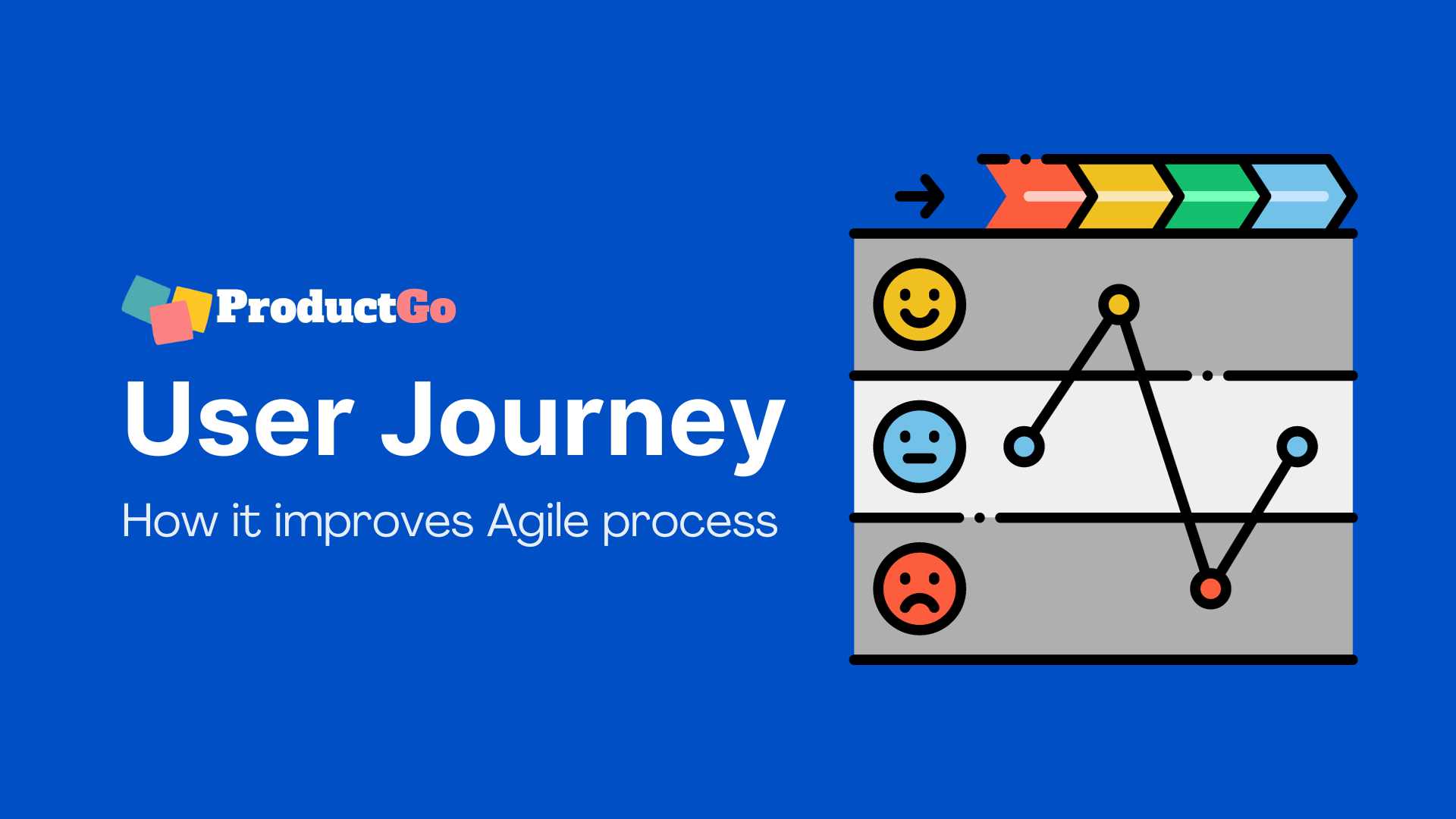
In the dynamic realm of product development, understanding and meeting user needs are fundamental to success. It’s no longer sufficient to merely offer a functional product; the true essence of innovation lies in crafting an experience that resonates with your target audience.
In this fast-paced landscape, the user journey emerges as a pivotal concept, offering a path for developers to empathize with their users and view their creations from a user-centric perspective.
Table of Contents
Understanding User Journey Mapping
Enhanced user-centricity, improved product quality, increased customer retention and loyalty, efficient resource allocation, agile evolution, integration of user journey mapping into agile methodologies, influence of user journey on sprint planning and backlog refinement, 1. define clear objectives:, 2. create user personas:, 3. map out the user journey:, 4. integrate user journey into agile practices:, 5. regular iteration and feedback:, 6. foster cross-functional collaboration:, time constraints, keeping maps updated, resistance to change, over-complexity.
A user journey is a user’s path when interacting with your product or service. It encompasses their entire experience, from the moment they become aware of your offering to the point where they achieve their goals or complete specific tasks using your product. Understanding this journey is akin to stepping into your users’ shoes, allowing you to see your product from their perspective.
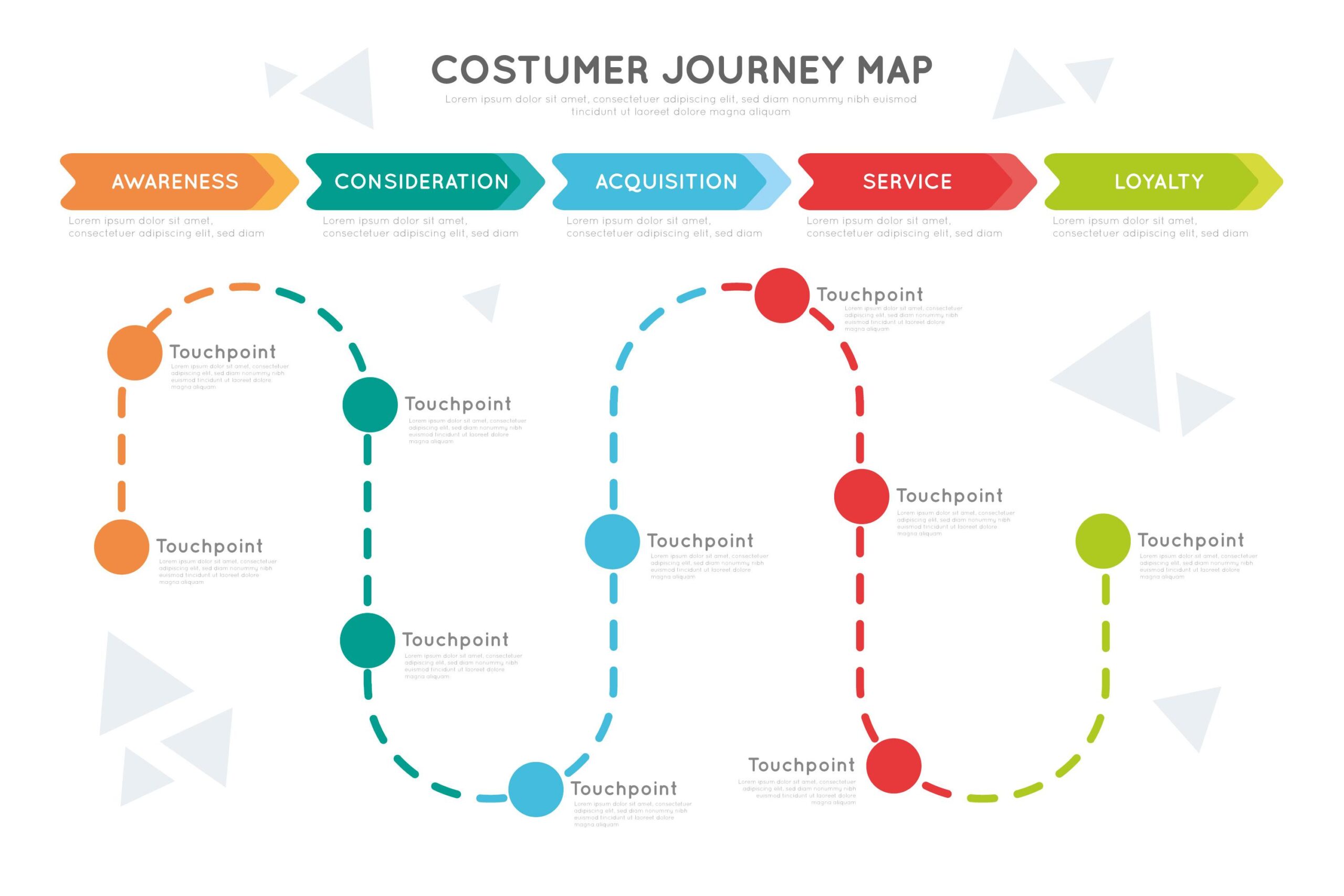
In the fast-paced world of product development, understanding your users is paramount. It’s not just about creating a functional product; it’s about crafting an experience that resonates with your target audience. This is where the concept of the user journey comes into play.
At the heart of user journey mapping lies a fundamental principle of customer-centered design. User-centered design is an approach that prioritizes the needs and preferences of users in every phase of product development.
Benefits of Incorporating User Journey
Incorporating user journey mapping into Agile processes offers a multitude of benefits that go beyond the confines of traditional development methodologies.
User journey mapping fosters a deep understanding of your customers’ needs, motivations, and pain points. In the Agile context, this means that every development decision is rooted in user-centricity.
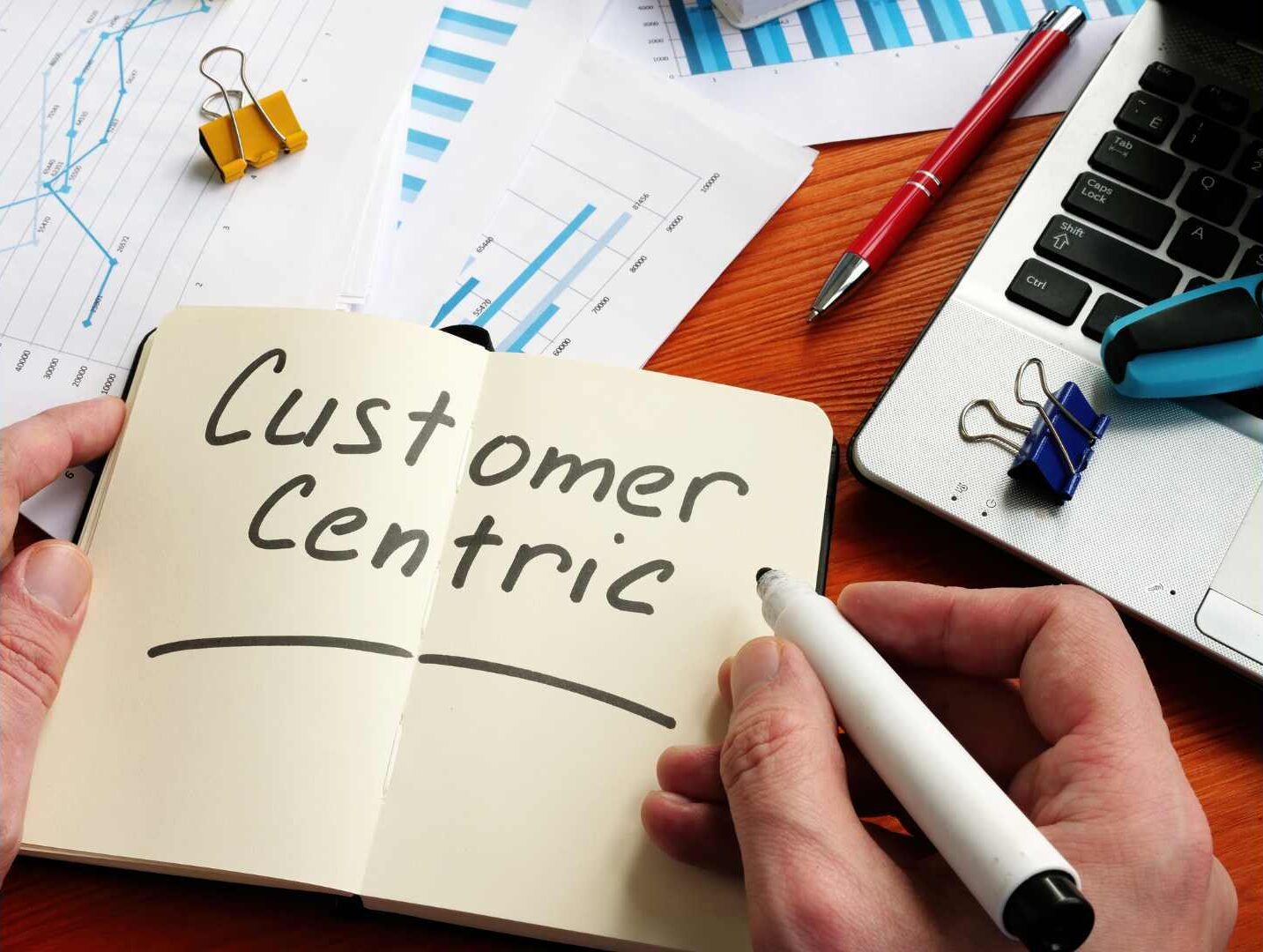
This laser focus on customer needs ensures that the product aligns more closely with user expectations, ultimately leading to higher levels of user satisfaction.
When user journey mapping becomes an integral part of Agile processes, it acts as a quality assurance mechanism. By visualizing the entire user experience, teams can identify potential bottlenecks, usability issues, or areas of friction.
Early detection of these problems allows for swift resolution and refinement before they can affect the end product.
A delightful user experience isn’t just about attracting new customers; it’s also about retaining and nurturing existing ones. User journey mapping in Agile processes provides a clear roadmap for enhancing the user experience over time.
Satisfied customers are not only less likely to churn but also more likely to become advocates, spreading positive word-of-mouth and contributing to customer growth.
Agile development emphasizes flexibility and adaptability. When user journey mapping is integrated into this framework, it becomes easier to allocate resources efficiently.
This strategic resource allocation leads to a more streamlined development process and optimized use of resources.
Agile methodologies thrive on constant evolution and refinement. User journey mapping fits seamlessly into this iterative approach.
This adaptability ensures that the product remains aligned with evolving user needs and preferences.
How User Journey Enhances Agile
User journey mapping can be seamlessly integrated into Agile methodologies such as Scrum and Kanban, enhancing the overall development process. Here’s how:
- Scrum: In Scrum, user journey maps can be used as a valuable tool during sprint planning and backlog refinement. Teams can create and review user journey maps to gain a holistic understanding of user needs and prioritize user stories accordingly. The user journey can also help Scrum teams define the scope of a sprint and set sprint goals, ensuring that each sprint delivers value aligned with the user experience.
- Kanban: Kanban’s visual nature aligns well with user journey mapping. User journey maps can be represented on the Kanban board to provide a clear overview of the entire user experience. As user stories progress through the workflow, teams can visualize how they contribute to the user journey, helping to ensure that work items remain user-centric and that blockers are addressed promptly.
- Sprint Planning: User journey maps provide a roadmap for sprint planning. Teams can reference the user journey to select user stories that align with the next steps in the journey. By doing so, sprint planning becomes more focused on delivering value that directly contributes to the overarching user experience.
- Backlog Refinement: During backlog refinement sessions, user journey maps help teams assess the relevance of user stories and features. They can identify gaps in the user journey and address them by adding or refining user stories in the backlog.
Practical Steps to Implement User Journey in Agile
Here are six practical steps to help Agile teams implement user journey mapping into their development process effectively:
Identify Your Goals: Begin by setting clear objectives for integrating user journey mapping into your Agile process. Determine what you want to achieve, whether it’s improving user satisfaction, enhancing product quality, or increasing customer retention.
Develop User Personas : Before diving into user journey mapping, create well-defined user personas. These personas represent different user types and their specific needs and behaviors. Customer personas will serve as the foundation for your user journey maps.
Manage your user persona with ProductGo – Agile User Story Maps, Roadmaps & Persona for Jira
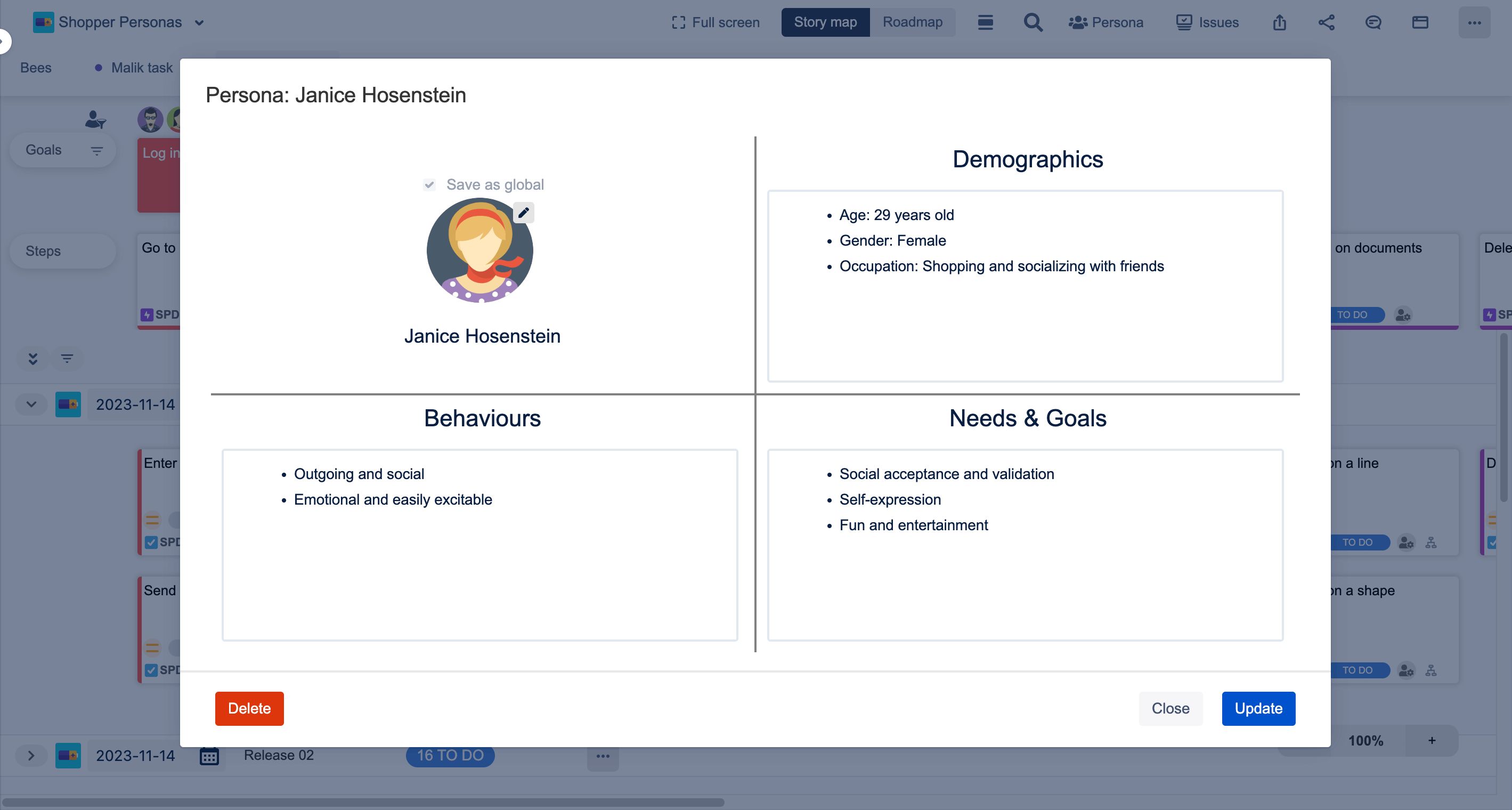
Identify User Touchpoints: Outline the key touchpoints where users interact with your product or service. This includes initial awareness, onboarding, core interactions, and any potential exit points.
Document User Steps and Emotions: For each touchpoint, detail the steps users take and the emotions they may experience. Understanding both the practical and emotional aspects of the journey is crucial.
Visualize the Journey: Create a visual representation of the user journey. You can use software tools, whiteboards, or even pen and paper to sketch out the journey. Include user personas, steps, and emotions to make it comprehensive.
Sprint Planning: During sprint planning, reference the user journey to select user stories that align with the next steps in the journey. Prioritize stories that address critical touchpoints or pain points for your users.
Backlog Refinement: In backlog refinement sessions, assess the relevance of user stories in the context of the user journey. Ensure that stories are aligned with the overarching user experience and identify gaps in the journey.
Iterate Continuously: User journey mapping is not a one-time activity. It should evolve alongside your product and user needs. Regularly revisit and update the maps to reflect changes in the user experience.
Gather User Feedback: Actively seek user feedback to validate and refine your user journey maps. User testing, surveys, and interviews can provide valuable insights into how well your product aligns with the mapped journeys.
Collaborate Actively: Involve cross-functional team members, including designers, developers, product owners, and testers, in the user journey mapping process. Different perspectives will lead to a more comprehensive understanding of the user experience.
Promote Communication: Encourage open communication within the team by using the user journey map as a shared reference point. This ensures that everyone is aligned with the user-centric goals of the project.
Challenges and How to Overcome Them
Agile projects often operate on tight schedules, leaving limited time for comprehensive user journey mapping.
Solution: Prioritize mapping the most critical user journeys first. Start with key touchpoints and gradually expand as time allows. Consider using lightweight mapping techniques to save time initially.
User journeys evolve as products and user needs change, making it challenging to keep maps up to date.
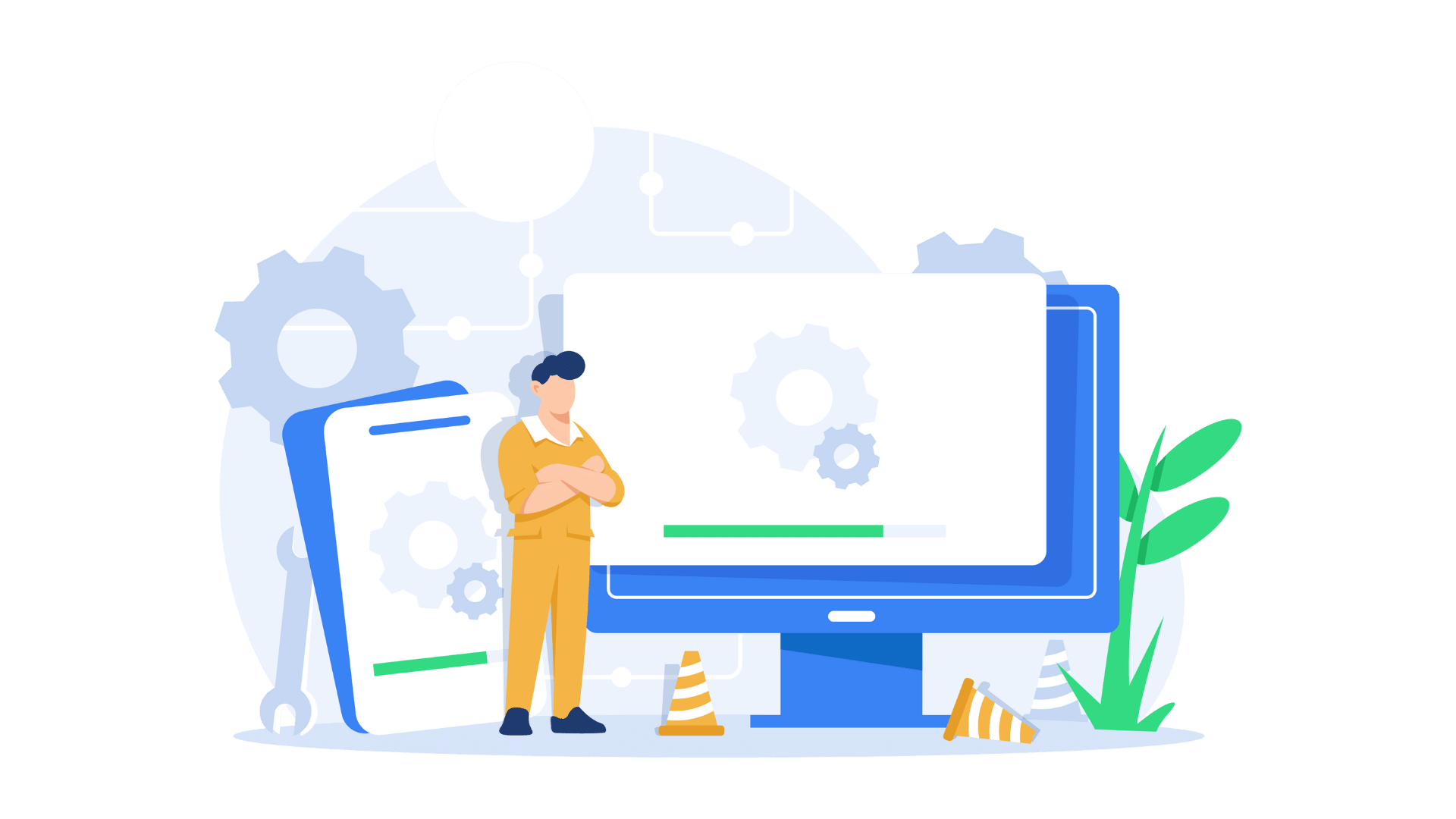
Solution: Schedule regular reviews and updates of user journey maps as part of your Agile process. Use feedback from user testing and customer support to inform updates. Make map maintenance a team responsibility.
Team members or stakeholders may resist adopting user journey mapping, seeing it as an additional overhead.
Solution: Educate the team on the benefits of user journey mapping, emphasizing how it enhances user-centricity and aligns with Agile principles. Start with small, low-risk mapping exercises to build buy-in gradually.
User journey maps can become overly complex, making it challenging to extract actionable insights.
Solution: Focus on simplicity. Keep maps clear and concise, emphasizing the most critical user interactions. Use visualization techniques that make it easy for team members to understand and engage with the maps. Avoid unnecessary details.
Incorporating user journey mapping into Agile processes isn’t just a best practice; it’s a transformative step towards delivering remarkable user experiences. By embracing the user journey, Agile teams anchor themselves in user-centricity, resulting in higher levels of user satisfaction.
This methodology acts as a quality assurance mechanism, identifying and resolving issues before they tarnish the end product. Furthermore, it paves the way for increased customer retention and loyalty, as satisfied users are not only more likely to stay but also to advocate for your product.
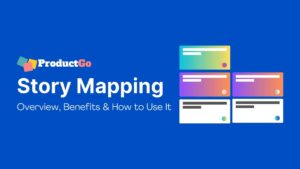
Leave a Reply Cancel reply
Your email address will not be published. Required fields are marked *
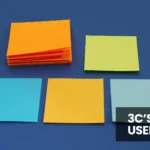
Three C’s of User Stories – Card, Conversion & Confirmation

Manage Multiple Projects in Jira with User Story Map (How To Do It & Benefits)

Understanding Agile Requirements Gathering
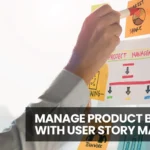
Enhancing Product Backlog Management with User Story Mapping

Agile Product Owner’s Role and Responsibilities

What is a sprint backlog? How to create one, with examples

What is Epic in Agile?

What is the difference between product backlog and user story?

What Is Agile Project Management And How To Apply This For Your Project?

Improve Project Management with AI
Sometimes questions are more important than answers
What are user journeys?
A user journey is a path a user may take to reach their goal when using a particular website. User journeys are used in designing websites to identify the different ways to enable the user to achieve their goal as quickly and easily as possible.

User journeys map out every step to reach a goal
User journeys are the step-by-step journey that a user takes to reach their goal. This journey will often consist of a number of website pages and decision points that carry the user from one step to another. The user journey is used to map out the current journey a typical user might take to reach their goal. This journey is then redesigned to form an ‘ideal’ user journey free from frustration. The output is traditionally a flow diagram demonstrating each page and decision point throughout the entire process.
First, understand who is using your website
In order to create realistic user journeys, it is important to first identify the users through an exercise called user profiling . Each user will have a task or goal they are trying to reach on the website, whether it is purchasing a product, finding opening times or cancelling a direct debit in a bank. Users have a need they must fulfil, and the steps they take to satisfy that need are referred to as a user journey.
Second, map out the easiest user journey
Each user goal can be first mapped out using the current website to identify any flaws or frustrations. This is often referred to as user journey mapping or customer journey mapping. Once an understanding of existing user journeys is fully illustrated, website designers can set out their recommended user journey – one which is as simple and easy as possible for users to reach their goals. This will form the basis of the new website.
Be confident that the website will cater for user needs
The map of the existing user journey provides a clear view of how easy or difficult it is for a typical user to reach their goal. This map will speed up the planning of a new website because it immediately highlights the current issues. If this map is then followed by an ideal user journey map, the project team gets a quick feel for how the website should work, what content and functionality are required to meet the user’s needs, and what aspects of the website must be in place to support the journey.
Developing a website around real user journeys provides confidence that the final solution will cater to the needs of real people.
Start with the best possible user journey, then compromise
The ideal journey can often prove to be difficult to implement, with business objectives and technical/design limitations impacting the ability to produce a quick journey; it is therefore important to create the ideal journeys with a multidisciplinary team to ensure all angles are covered. Balancing user goals and business goals is very important at this stage to ensure both are taken care of without impacting each other.
User journeys are critical in the design of new websites by highlighting the current issues and producing an ideal picture from a typical user’s perspective early in the process. As long as the project team includes web designers to help balance the business goals with the user goals, user journeys are invaluable in creating a new website.
You may also like
- Become an Insider
- Explaining what user experience is and why it is important
- Avoiding human error with good design
- Four types of usability tests
More UX Methods Questions
Usability testing is a way to see how easy to use something is by testing it with real users. Users are asked to complete tasks, typically while they are being observed by a researcher, to see where they encounter problems and experience confusion. If more people encounter similar problems, recommendations will be made to overcome these usability issues.
User-centred design is a process or set of tools used to design a service which focuses on what users need at the very beginning and continues throughout development until launch. Typically services are designed from a technical and business perspective, with consideration for users added in later. Instead, User-centred design ensures the service focuses on what users need before balancing this with the technical and business requirements.
Wireframing is a way to design a website service at the structural level. A wireframe is commonly used to lay out content and functionality on a page which takes into account user needs and user journeys. Wireframes are used early in the development process to establish the basic structure of a page before visual design and content is added.
Website prototypes are interactive demos of a website. These are often used to gather feedback from project stakeholders early in the project lifecycle, before the project goes into final development
User requirements capture is a process used to understand what typical users will need from a service which is about to be designed. Users are observed using similar services and interviewed about the ways they go about planning and completing their goals. This information is used to identify a list of content, features and functionality the new service must have in order to satisfy the needs of its users.
Customer profiling is a way to create a portrait of your customers to help you make design decisions concerning your service. Your customers are broken down into groups of customers sharing similar goals and characteristics and each group is given a representative with a photo, a name, and a description.
Card sorting is a technique that involves asking users to organise information into logical groups. Users are given a series of labelled cards and asked to organise and sort them into groups that they think are appropriate. Card sorting helps you to design an information architecture, workflow, menu structure or website navigation paths.
Focus groups are a research method used to gather feedback and opinions from customers. Each person in the group is encouraged to participate in a discussion which is pre-planned by a researcher and is guided by a facilitator. Focus groups are typically used to gauge opinion and gather information from users about products, services, and features before they have been developed.
Remote usability testing is a way to test how easy to use a website is with users who are in a different geographical location. Traditional usability testing brings users and researchers together in one place to conduct the test, whereas remote usability testing allows the researcher and user to be in different locations while the test is completed.
An expert review is where a usability expert uses his/her knowledge and experience of testing websites with users to walk through a website in the shoes of a typical user. The expert will spot problems and recommend changes to improve usability when budgets and timescales don’t allow for user research.
Service design makes a service easier to use, more useful and more desirable for the customers who need to use it: the service user. Whether creating an entirely new service or improving an existing one, service design focuses on what customers really need at each stage of their interaction with an organisation.
Ethnography is a study through direct observation of users in their natural environment rather than in a lab. The objective of this type of research is to gain insights into how users interact with things in their natural environment.
Tree testing is a way of evaluating a proposed site structure by asking users to find items based on the sites organisation and terminology. This online test only displays the navigation links and removes any additional clutter.
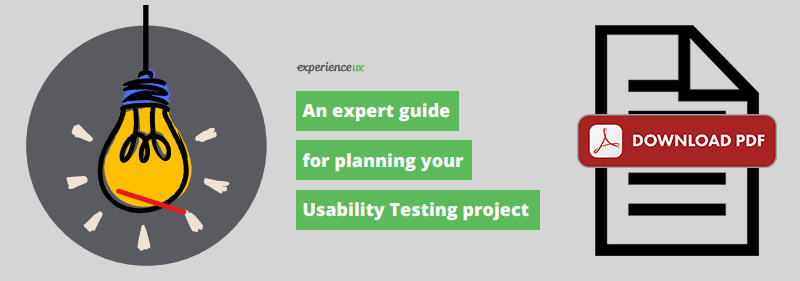
Download Our Free Guide Today!
Find out more.
First Name (required)
Last Name (required)
Email (required)
Telephone Number
Message (required)
I Agree (Tick To Agree) The data collected from this form will be used to respond to your enquiry. You can find out more about how we process your personal data in our privacy policy

Let’s Chat
If you’re ready to introduce the innate power of human centeredness to your products, services and brand, drop me an email today.
01202 293652 [email protected]

- Privacy Overview
- Strictly Necessary Cookies
- Additional Cookies
This website uses cookies so that we can provide you with the best user experience possible. Cookie information is stored in your browser and performs functions such as recognising you when you return to our website and helping our team to understand which sections of the website you find most interesting and useful.
Strictly Necessary Cookie should be enabled at all times so that we can save your preferences for cookie settings.
If you disable this cookie, we will not be able to save your preferences. This means that every time you visit this website you will need to enable or disable cookies again.
This website uses the following additional cookies:
(List the cookies that you are using on the website here.)
Please enable Strictly Necessary Cookies first so that we can save your preferences!
WEBSITE ESSENTIALS
How to improve your website with user journey mapping
- Jenna Romano
- Dec 8, 2022

When you create a website for your business, you want it to do more than just inform prospective customers. While your website should educate, it should also actively help visitors achieve their goals.
Your customer will visit your website with unique intentions, and you must consider how they’ll experience your site. To shape your site to create the best outcome for both you and visitors, user journey maps can tremendously benefit the design process.
In the following guide, we’ll look at what a user journey map is and the benefits of using them for your website design —plus we’ll detail the steps you need to create one.
What is a user journey map?
A user journey map, also referred to as a customer journey map, is a diagram that depicts a user’s interactions with a product over time. Typically represented by a flow chart, user journey maps are a common UX design research and planning tool.
Anyone designing a website can create journey maps to improve their site’s user experience. Typically, UX designers complete the research and planning involved in user journey mapping before they design a website for the following reasons:
It’s a strategic exercise: User journey mapping gets you thinking about who your visitors are, their goals and what they want and need from your site to accomplish them.
Helps visualize the user flow : By visualizing your visitors’ steps throughout the site, you’ll understand their thought process as they work to achieve their goal.
What are the benefits of creating a user journey map?
Designing a website with user journey mapping is a user-centered method that will help you empathize more with the user when designing your site’s content and information architecture . Because user journey mapping allows you to anticipate visitors’ behaviors, your design will result in a more positive user experience.
User journey maps will also help you with:
More confident decision-making
Journey mapping allows you to remove inefficiencies and mitigate risks as you visualize your customers’ experience.

Website optimization
Business owners can use user journey maps to influence visitors to click on CTAs and increase site conversions. It can also help them build an intuitive website structure that people feel comfortable navigating.
How to create a user journey map
With user journey mapping, you should understand who your visitors are, why they’re on your site, and what’s going to help them achieve their goals. The steps below will enable you to create a user journey map that anticipates your visitors’ needs and how they browse it:
Get an app to help you map out your user’s journey
Figure out who your ideal users are
Create user personas
Define the scope of the user journey map
List the key phases and touchpoints
Think about user goals and actions at each phase
Make an empathy map for the user journey
Anticipate problems along the journey
Think about opportunities for optimization
Collect data, review and revamp your journey maps
01. Get an app to help you map out your user’s journey
While you could use a spreadsheet or a flow chart maker to create a user journey map, it’ll take more time than using a UX tool built specifically for user journey mapping.
Use these tools to add and remove fields to your map, rearrange the steps and edit its visual appearance. Many times, you’ll have the option of starting from scratch or using a pre-made user journey template that suits your needs.
02. Figure out who your ideal users are
When starting a business, you usually have a general idea of your target audience. User journey mapping goes further to discover your niche. Typically, you’ll find your ideal segment of users at the intersection of what you’re good at, what you’re passionate about, and where there’s a growing demand for what you do.
Go ahead and fill in the blanks:
Experience: _______________________
Passion: __________________________
Demand: _________________________
What sits at the intersection between all three? That’s your ideal customer.

03. Create user personas
Once you’ve identified your ideal user, research them to better know who they are. Use your insights to create user personas that realistically communicate the people most likely to visit your site.
User personas are fictional users who represent the needs, personality and goals of a larger archetypal user group. In addition to adding a “real” name and photo to user persona profiles, you’ll fill in details related to:
Basic demographics
Professional or personal details
Motivations
Pain points
Quotes that describe what they think or how they feel
Many brands have numerous user personas. Create profiles for each of your target personas. When you’re done, choose one to start with and include them in your user journey map.

If your brand is new or yet to launch, you might not have much existing data to pull from. You can use tools to learn about your ideal user, even if they’re not your current user:
User interviews: Round up interviewees who represent potential users, and ask them questions related to your brand. Keep in mind that this information needs to help you learn more about your average or potential user, as well as what kind of online experience will encourage them to sign up.
For example,
What do you do for a living?
Why did you start your business?
Have you ever considered using a service like ours? Why?
What would convince you to work with our services? Rank your top 3 reasons.
Social media listening: Social media is a powerful tool when creating user personas, since it helps you know potential users more personally. By gathering data on what your target users talk about, you’ll understand what motivates them to engage with other brands and can apply that to your site as well.

04. Define the scope of the user journey map
The more granular your user journey maps, the more precise your web design. You can (and should) create user journey maps for the different interactions customers have with your brand and your website.
When mapping out the user journey for new visitors, focus on what their first site experience should look like as they discover more about your product. Once you have an initial interaction with a target user, build on it. With returnees, for example, think more about what long-term loyal customers want when they enter the site, such as checking out new products or rewards programs.
Break down the scope of each interaction with the following details:
User: This is a segment of our user persona. For example, “it’s a lead we targeted on Facebook.”
Goal: What is the user’s goal during this particular visit? If the user found an ad advertising a discounted course, for example, their goal is to find out more about it.
User Flow: Provide a basic summary of how you expect this interaction to go. For example, you anticipate that a user who landed on your site through a Facebook ad will want to first read more details and then purchase your product.
What follows in the user journey map will help you figure out what’s needed on your website to increase the likelihood that they will complete their purchase at the end of the visit.
05. List the key phases and touch points
By defining certain phases of the user journey, you’ll start visualizing in detail how users get to your site, why they arrived and how they’ll interact with it. Each phase outlined in your map should include the various touch points where these interactions happen.
You can also think of these phases as your goals for their visit.
Discovery: Visitors find your brand and site through a targeted Facebook ad.
Video: Visitors are brought to a landing page of your site featuring a video that introduces your brand.
Learn: Visitors read more information about what you do and what they’re going to get from your offering.
Purchase: Visitors pay for your services with a simple two-step checkout process.
Email phase: Visitors receive a “thank you” email with relevant details to get started and stay in touch.
As you fill in this part of the user journey map, consider the following questions:
What is the source of this website traffic? In other words, what lured in these users? You can optimize these off-site touch points to increase not only your quantity of traffic, but the quality of it, too.
What is the first page they’ll see on your site? For this particular user journey, does it make sense for them to enter through the home page? Or is it better to take them to a dedicated landing page where they can focus on a specific product or service?
Where should they end their journey? When considering the best (and most realistic) ending point for visitors, think about both their needs and your own goals. For example, after visitors learn about your brand, you probably want to take them straight to a purchase page with the goal of converting. However, what if a visitor isn’t ready to purchase? You can still hold on to that lead by leading them to sign up for your weekly newsletter.
06. Think about user goals and actions at each phase
Now that you’ve mapped the various phases, write out the user's specific goals for arriving at this touchpoint and what actions they’ll take to achieve it. Objective-setting will help you understand what drives your users forward and anticipate what most visitors want to happen when they get to each stage.
For example:
Discovery: If I click this ad, I’ll see if this offer is as legitimate as it seems.
Video: If I watch this video, I’ll get a high-level overview of this course.
Learn: If I read through this page, the coach will address any doubts I have about this course.
Purchase: If I click this “Buy Now” button, I’ll be directed to checkout.
Email: If I open up my email, I can get started on the course right away.

07. Make an empathy map for the user journey
A user’s emotions heavily influence their journey. If your website doesn’t elicit the right kind of emotional reaction—be it relief, joy, excitement, or something else—visitors might not end up where you want them to.
A user journey map should reflect potential shifts in the user’s mood, behavior and thought process as they continue through each phase. This information allows you to determine the best way to use or influence that emotional state to help them accomplish their goals.
An “Overall Sentiment” section can depict your user’s mood. You can describe these using text or visuals, including emojis and colors and descriptions to show how their feelings transform over the course of their journey. Additionally, a “Think & Feel” section is where you can write out quotes that represent how your users feel during each phase.
To complete this part of the map, go back to the research you did earlier. Through user interviews and social listening, you should have some helpful soundbytes. Familiarize yourself with your users’ language so you can craft feelings that sound just like them.
08. Anticipate problems along the journey
No website is flawless. Even leading brands that have been online for decades must consistently work on refining the user experience. Knowing this, add a “problems” section to your user journey map.
This section helps you anticipate where your users may encounter friction, so you can solve these issues in the future. In some cases, it could relate to your web design. For instance, a lengthy checkout form might lead users to abandon your site. In other cases, the problem could be something larger—like a lack of brand reputation.
Writing the problems that may keep users from moving to the next step, will help you critically consider and solve how to design your website around them.
09. Think about opportunities for optimization
The “Opportunities” part of a user journey map is where you’ll hypothesize ways to optimize the user experience. Treat this section like a brain dump for all the things you can do to improve the user journey.
Once you’ve got a list of ideas, you can look around for case studies and research to back up your hypotheses. Tap into what’s worked for others and load up your “Opportunities” section with data-backed ideas to improve your own users’ journey.
10. Collect data, review and revamp your journey maps
Your initial research helped you get to know your users and how you can optimize your site for them. However, your live website’s data unlocks the next phase in designing the ideal journey.
Once your site goes live, start monitoring traffic to measure your initial user journey mapping’s effectiveness. Identify the following data:
The most visited landing pages on your website
Which pages users most commonly visit next
How the subsequent flow throughout the website looks
Which areas of the site experience the greatest loss of users
You can use website analytics or visualization tools to watch your user journeys play out in real time and historically, plus see what happens when different users enter your website.
One last thing you can do at this stage is get feedback from actual users. By conducting user interviews, adding a feedback form to your site or running online surveys, you can gain real input about your site experience
Once you’ve identified the problems along your designed user journey, return to your map and update it accordingly. This real user data can help highlight new opportunities and revamp your user journey, making solid, data-backed redesign decisions for your site far into the future.
Related Posts
What is UX? A glimpse into user experience and the UX design process
How to make a Wix website
Best UI and UX design tools of 2024
Was this article helpful?
What is a User Journey?
In the latest in my series covering the planning of your website project , we take a look at User Journeys.
Type “what is a user journey” into Google, and the chances are you’ll see this broad definition:
A user journey is a series of steps (typically 4-12) which represent a scenario in which a user might interact with the thing you are designing. They can be used for 2 main things:
- Demonstrating the way users currently interact with the service / website / product
- Demonstrating the way users could interact with the service / website / product
User Journeys are used for a wide range of creative projects – not just websites – so the exact form they take and the way they’re used can look very different. But in this instance, a User Journey tells the story of how a customer interacts with your website. It captures the frustration, joy or other emotions customers experience that you can’t get from just raw data.
Some Good Examples
This famous User Journey from Lego tells the story, in steps, of an executive’s experience of visiting Lego’s headquarters. Icons have been used to show the executives emotions at each stage:
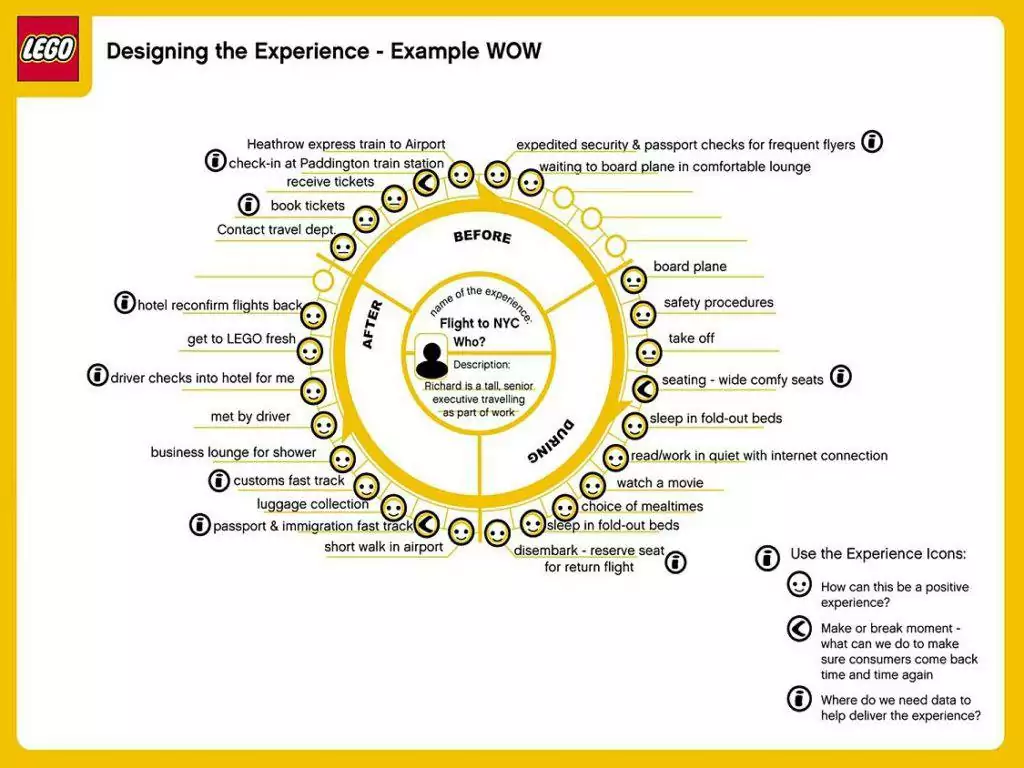
This next Journey shows how a customer might interact with a health game app. You’ll notice in this example that “before” stages are also included, so we can see how the customer arrives, and where from. This helps put the whole project into a real-world context:
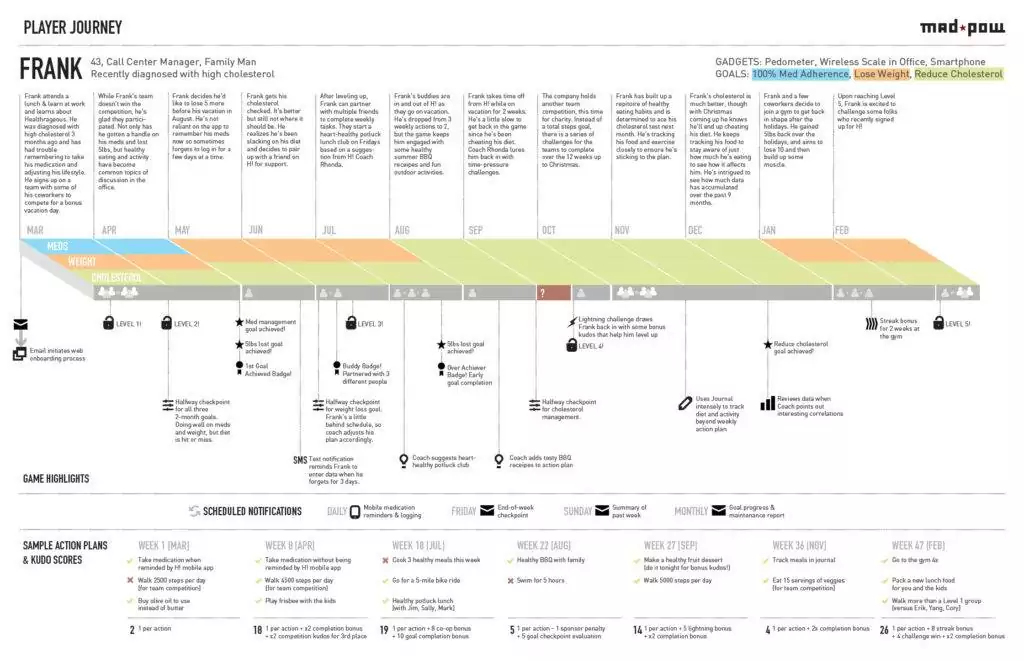
And in this third example, the user’s emotions are indicated by a graph running the width of the diagram. Key points are plotted on the x-axis:
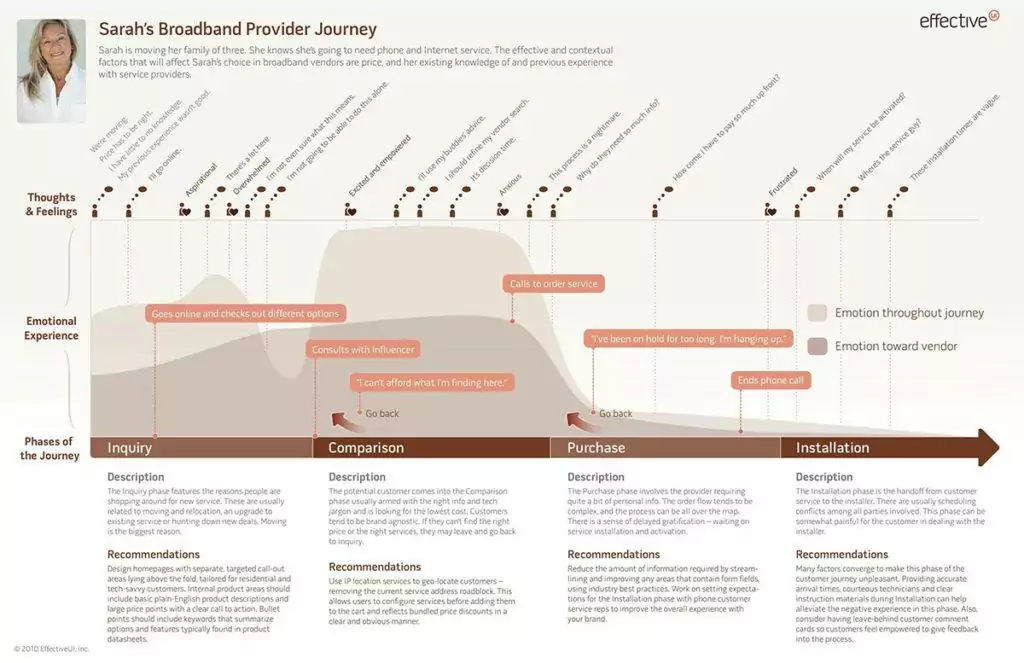
Why do I need a User Journey for my website project?
There are several key benefits to creating User Journeys for your website project:
- Helping to understand user behaviour – User Journeys can help you work out how your Personas (your typical users) are going to travel through the site to complete their goal
- Beginning to form the basis for the site structure – once you understand the way the user interacts with the site, you can start to think about what sections and pages you need, and how they’ll link together
- Creating a vision for the project – User Journeys are an excellent way to visually communicate the overall aims of the site with everyone involved in the project, from the MD to the designer to the copywriter
What should the User Journey look like?
As you can see from these examples, there’s no right or wrong way to present your User Journey…
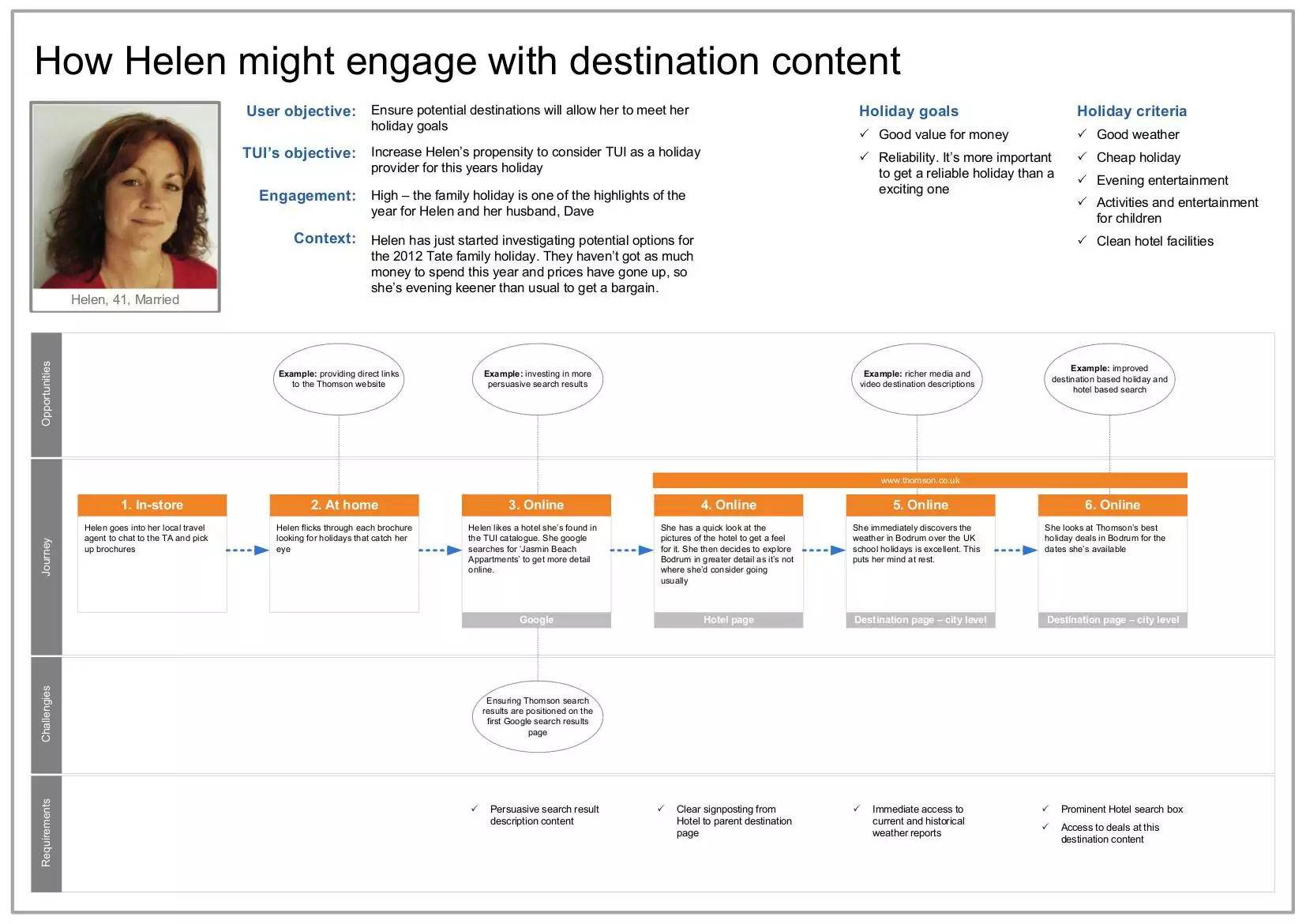
…but you should try to include:
- A picture of the Persona the User Journey relates to
- A title that sums the User Journey up, e.g. “Making an enquiry about a new kitchen”
- A series of briefly described steps
- An illustration to reinforce what’s happening (if it helps)
- Benefits to the user that happen along the way
- Any functionality being used
Further reading
If you’re after more detail about How To Create a User Journey, check these out:
User Journeys – The Beginner’s Guide, by UX Review Example UX docs and deliverables All you need to know about Customer Journey Mapping A Step By Step Guide to Building Customer Journey Maps
What Is A User Journey Map and How Do You Create One?
10 min read
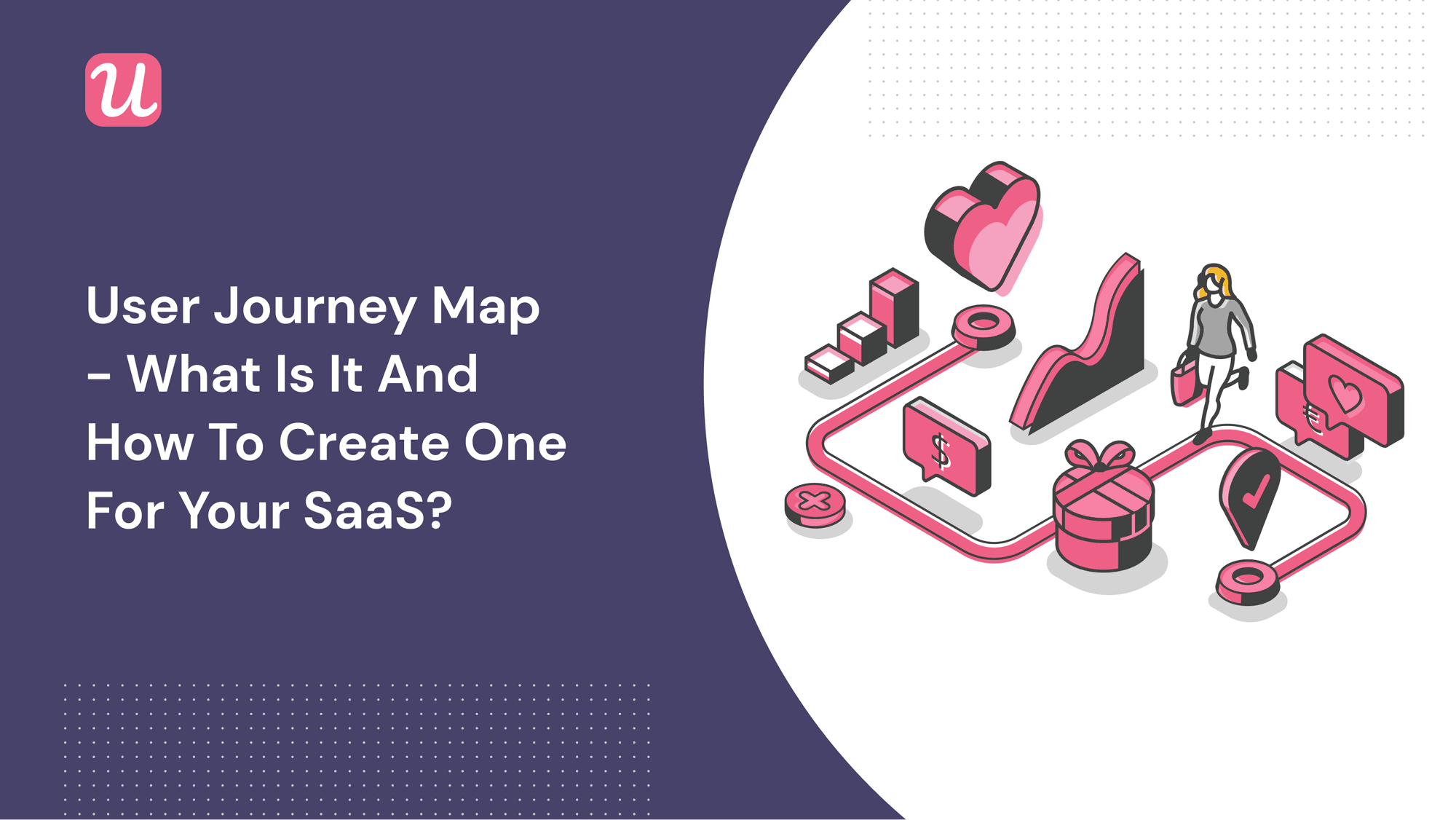
Without a proper user journey map, it can be hard to engage users in a meaningful way across every stage of their journey. In this post, we will cover what exactly a user journey map is, what it isn’t and how to build one in six steps – so let’s dive in!
- A user journey map visualizes all steps taken by a particular user to reach a particular goal while using your product.
- The difference between a user journey map and a customer journey map is that the former essentially involves steps users take to become customers, and the latter involves all interactions between customers and your product after the purchase.
- A user journey map shows how a particular user interacts with your product, while a user flow reflects the ideal user journey in the eyes of a product team.
- While a user journey map reflects one part of a particular user’s experience, a user experience journey map reflects all segments and interactions between a user and your product.
- A user journey map helps you turn users into customers and retain them.
- To create a user journey map, you need to follow six steps: set an objective, define a user persona, define the user persona’s journey, identify milestones, fill in touchpoints and use a journey mapping tool.
- Users will interact with your product differently, so you need to create a user persona and then a specific user journey map for that persona – our guide will help you with that.
- Define the stages you will include in a user journey map basing on the previously defined objective.
- Identify milestones (key points) in the user journey, which will help you keep track of where a particular user is in the journey.
- Touchpoints are small events that need to happen for a user to reach a milestone – for example, you can create an onboarding checklist out of them.
- If you have followed all the previous five steps, you can then use a user journey mapping tool.
What is a user journey map?

A user journey embodies all steps a particular user takes to reach a particular goal when using your product. Usually shown in the form of a visual map, it considers all product adoption phases in your funnel.
Depending on your objective when building one (we’ll cover this in a bit!) a user journey map can be focused on:
- A current state or a future state perspective
- A single-stage in the journey or start to finish
- Understanding the user persona better (Day in the Life journey map)
But before you roll up your sleeves, you need to decide on what you are actually trying to do. If you google related terms, you may find customer journey map, and user flow terms used as synonyms. That’s really misleading.
Why? Consider the difference between a customer and a user in the SaaS industry:
- A customer is a person who is looking to spend money on your product or already had bought something in the past (a group of customers includes: leads, potential customers, prospects, MQL, SQL, etc.)
- A user is a person who starts using your product without spending money on it (users sign up for a trial , create freemium accounts, start interacting with your SaaS product)
User journey map vs customer journey map

Let’s start with a full understanding of the user journey concept before jumping to mapping and templates .
First of all, a user journey looks like a customer journey.
It consists of steps taken by a user, points of contact with your product, and how they feel as they’re trying to achieve a particular goal inside your product.
There is one major difference, though.
A customer journey involves all interactions between customers and your company after the purchase. It is very high-touch and involves different company departments – from customer success to sales.
On the other hand, a user journey is normally low-touch. Its main goal is to convert users into customers, so most interactions occur within the product itself.
If you want to visualize your user journey, you need to create a user journey map. It will help you determine the most common problems users encounter along their journey and possible solutions.
User journey map vs user flow
Contrary to what you can find on the internet, user journey maps are not the same as user flows. While the user journey map shows how users interact with your product, user flow shows how the ideal user journey should look like according to a product team.
User journey map vs user experience journey mapping
Remember that user journey maps are not the same as user experience journey maps .
The difference is that a user journey map may refer to one segment of the experience that the user has, while a user experience journey map includes every single interaction between users and your product.
Benefits of using a user journey map
Imagine you got lost in the forest, but you actually have a detailed map that will help you get out of the woods on you. Now, what do you do?
A) Refer to the map
B) …throw that map away?
I don’t think you’d choose B.
Logical right?
But I see option B chosen in the software industry over and over again.
Companies are looking for a product-market fit in the jungle full of lookalike solutions until they find it.
Of course, without a map.
However, there is a way to find your PMF quicker. And it leads through a remarkable user experience .
Your users need to be able to recognize the value of your product instantly. It will be the reason they turn into customers.
The next thing you must do is keep providing positive experiences as it keeps users loyal to your product. This will help you acquire new customers and grow the company’s revenue.
You can do that by following these steps:
- Understand how the user interacts with the product
- Personalize onboarding for each user persona
- Activate users faster – by knowing what the activation point is, you can build in-app experiences such as checklists and tooltips to guide users and help them see value in your product faster.
Before you can take these steps though – you need to know how your user journey. And to do that – you need to visualize it by creating a user journey map.
How to create a user journey map?
Step 1: set an objective for your user journey map.
Start by asking – why am I creating this map?
The reasons may be different:
- To improve the specific stage in the user journey
- To eliminate friction at one of the touchpoints
- To improve your PQL (Product Qualified Lead)-to-paid user conversion rate
In other words – what is the big objective you are trying to achieve?
You can zoom in or zoom out on your map as much as you need.
If you don’t set a specific objective, your user journey map won’t be specific enough and it won’t give you the outcomes you’re looking for.
Step 2: Who is your user persona?

Before you start creating a user journey map, you need to know who are you creating this map for.
In SaaS, the final look of the map will depend on the job-to-be-done and use case. Such maps will differ from each other as users will interact with your projects differently.
Basically, you need to remember these things when creating a user persona:
- Preferably use real data (observed and researched) if you can, not guesses or assumptions.
- When creating a user persona, ask real users simple questions. That way you won’t incorporate your own biases when building a persona.
- Focus on asking open-ended questions which don’t suggest the answers nor influence the users.
- If you are just starting out, educated guesses are fine if you don’t rely just on them. Nevertheless, you should start collecting real data as soon as you can.
If you want to learn more about creating user personas, check out an article we wrote on building a user persona (including 10 SaaS user persona examples) .
Step 3: Define the user persona’s journey stages you’re mapping

The objective that you have defined in Step 1 will determine what stages you need to include in your map.
For example, if you focus on optimizing the user secondary and tertiary onboarding only, your map will only include those stages.
Remember to be specific and focus only on the stages that will have an impact on your objective.
Step 4: Identify milestones in the user journey
Milestones are key points in the user journey, which usually happen at the end of each stage. They are an essential part of creating a user journey map.
For example:

Milestones help you define the journey a user is taking and also help you track where the user is at any particular point.
You can use milestones to keep track of where a user is in their journey. You should also set a specific goal for each milestone. Using user journey analytics , you will track each goal completion rate and know how your users advance through their journey.
Example of a milestone: the activation point in a user’s journey, which happens when the user completes a set of actions in your product.
Want to track goals across the user journey and build no-code in-app experiences to drive goal completion? Get a Userpilot demo and see how easy it can be!
Step 5: Fill in the blanks in your user journey with touchpoints
If milestones are key points in a user’s journey, touchpoints are the smaller events that need to happen for a user to reach a milestone.
Let me give you an example – the primary onboarding steps the user has to take to reach the activation point. If we are talking about a social media planning platform, a user must go through the following touchpoints to reach a milestone:
- Create account
- Connect social media accounts
- Schedule first posts

These touchpoints are essential for the user to activate – hence are often referred to as the ‘key activation points’.
In order to push the users to activate (which is essential for them to keep using your product!) you can e.g. create an onboarding checklist that will motivate them to hit these key touchpoints faster.
Step 6: Build the journey using a journey mapping tool
Firstly, add images with what the user sees at each touchpoint.
Secondly, try to identify possible friction points and obstacles.
Thirdly, use product analytic s and session recordings.
Lastly, you will need a journey mapping tool. Most of them (if not all) offer premade user journey templates so it will boost the process of creating such maps significantly. You can then fill out them with qualitative or quantitative research.
User journey mapping tools
We’ve already talked about user journey mapping tools in case you are looking for a comparison, but here’s our shortlist:
The key focus of UXPressia is improving customer experience. Inside, you will find many ready-to-use templates such as user journey maps for customers or even those for onboarding new team members.
Miro is one of the most popular tools out there. You can start using it by choosing one of the templates, including user journey maps or kanban boards. They strongly focus on product education and help customers start as quickly as possible.
Do you want to keep using Google Sheets? LucidChart might be your choice – it offers a great integration. It’s also really easy to start creating the first diagrams; however, it’s not a dedicated tool for user journey mapping.
Conceptboard
Conceptboard is a tool dedicated to remote teams which can use it as an online whiteboard. Thanks to Conceptobard, teams can collaborate regardless of the location.
Smaply helps you notice both pain points and moments of truths in the user journey. You can use it to map your user base and identify user personas and team influencers regardless of the journey stage.
As it says on the website, FlowMapp offers UX tools for web design. You can use it to create various types of flow maps, including user journey maps.
Creating a user journey map can help you identify users’ pain points along their journey and help you ultimately increase conversions and retention.
In summary, you can use:
- Interviews with real users
- Data analytics
- Session recordings
And then follow our six steps when creating user journey maps.
Start with defining an objective of a particular user journey. Then proceed to create a user persona for that journey. The next step is to define stages of the journey of that persona.
Then, identify milestones in that user journey, and then touchpoints needed to reach these milestones. Finally, take all gathered data, information, and images, proceed to a user journey mapping tool and create a user journey map.
Using user journey mapping tools may be a lot of help – especially if you are just starting out. Most of them offer ready-to-use templates that you can use and fill out with your own qualitative and quantitative research.
Want to get started with user journeys? Get a Userpilot demo to find out how.
Leave a comment Cancel reply
Save my name, email, and website in this browser for the next time I comment.

Get The Insights!
The fastest way to learn about Product Growth,Management & Trends.
The coolest way to learn about Product Growth, Management & Trends. Delivered fresh to your inbox, weekly.
The fastest way to learn about Product Growth, Management & Trends.
You might also be interested in ...
How do aha moments lead to feature and product adoption.
Aazar Ali Shad
Product-Led vs Sales-Led: What’s the Difference, and Which One Is Right for You?
Userpilot Content Team
What Are Marketing Funnels? A Comprehensive Guide to Streamlining Your User Journey

7 Differences Between Customer Journey vs. User Journey
20 September, 2023
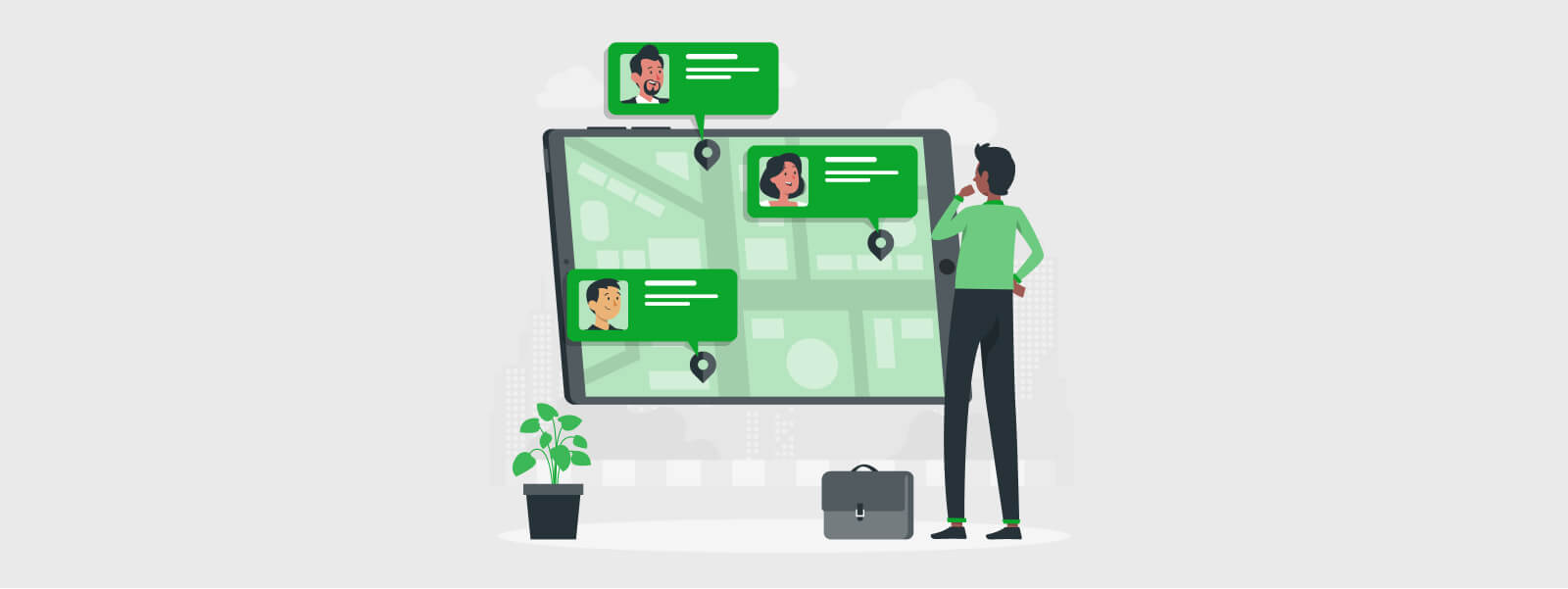
In today’s business landscape, where brands and websites vie for our attention, understanding the nuanced differences between Customer journey vs. User journey can be the key to unlocking a seamless online experience.
While the terms might seem interchangeable, they each hold a distinct role in shaping how we interact with businesses and their digital platforms.
In this article, we’ll explore the seven key differences between customer journey and user journey and why they matter for your business.
Differences Between Customer Journey Vs. User Journey
Customer journey and user journey are two phrases that are frequently used in this context. While they may sound similar, they represent distinct aspects of the customer experience.
Well, before heading to the details, let’s make your further reading easier through this quick table below highlighting the key points of the user journey vs customer journey.
1. Knowing the Fundamentals(Definition )
Customer Journey
The customer journey refers to the entire end-to-end experience that a customer undergoes when interacting with a brand or business. It encompasses all the touchpoints to interact with the customers , both online and offline, from the initial awareness of the brand to the post-purchase interactions and beyond.
This concept focuses on building and maintaining a long-term relationship with the customer, fostering loyalty and satisfaction.
User Journey
In contrast, the user journey is a narrower concept that concentrates specifically on the steps and interactions a user takes within a digital platform, such as a website or mobile app. It emphasizes optimizing the user’s experience, ensuring usability, and enhancing satisfaction while navigating through the digital interface.
The customer journey has a broad and encompassing scope. It extends across the entire spectrum of interactions that a customer has with a brand, product, or service. This journey involves both online and offline connection points. It begins when you first discover the brand, and continues as you research products, make a purchase, get post-purchase support, and stay engaged over time.
It considers various channels and platforms, including social media, websites, physical stores, customer service centers, and more. Essentially, the customer journey covers every aspect of the customer’s relationship with the brand, aiming to create a holistic and positive experience.
the user journey has a more focused and limited scope. It concentrates exclusively on the interactions and experiences of a user within a specific digital platform or interface, such as a website or mobile application.
User experience is concerned with the user’s navigation through the digital environment, including actions, decisions, and reactions while using the platform. It primarily revolves around ensuring the usability and efficiency of the digital interface, making it user-friendly, intuitive, and satisfying.
The user process does not extend beyond the boundaries of the digital experience, making it narrower in scope compared to the customer journey.
3. Different Goals and Objectives
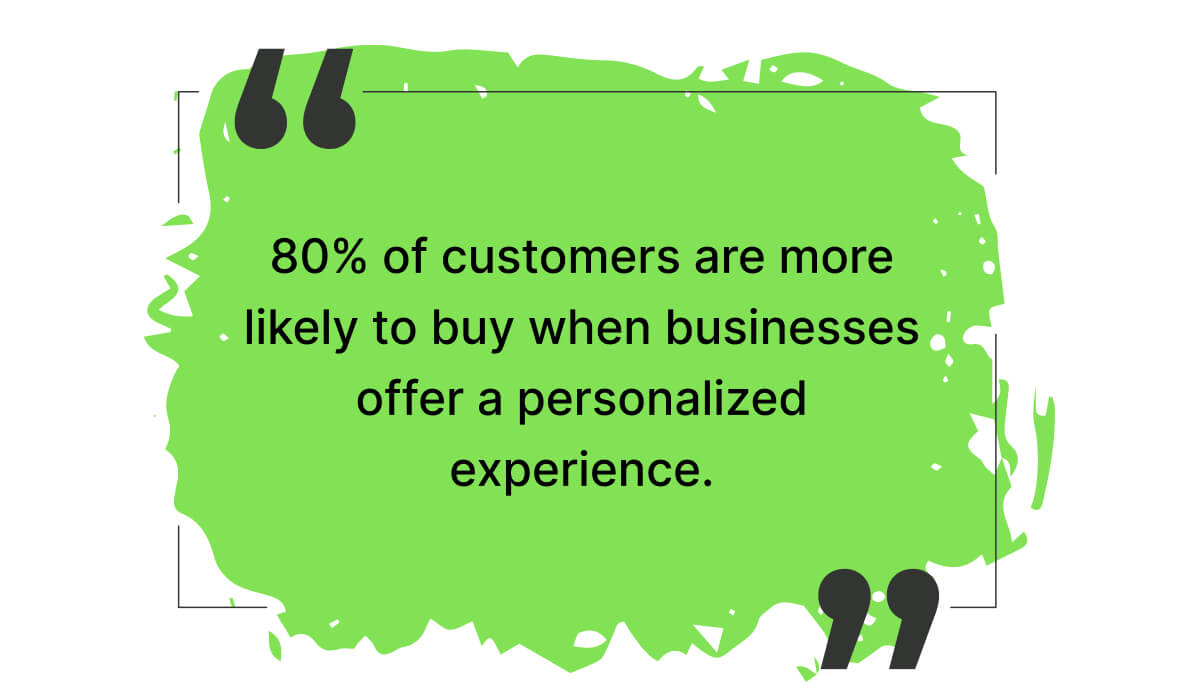
The primary goal of the customer journey is to nurture and maintain a long-term relationship between the customer and the brand. It aims to create a positive and memorable experience at every touchpoint, from initial awareness to post-purchase interactions and beyond.
Objectives :
Building brand loyalty is a key objective of the customer journey. It seeks to turn first-time customers into repeat buyers and advocates for the brand. The customers are satisfied with their overall experience is crucial to ensure this includes providing excellent customer service and addressing any issues promptly.
The customer journey aims to shape a positive perception of the brand, ensuring that customers associate it with trustworthiness, reliability, and value. Brands can maximize the customer’s lifetime value by encouraging repeat purchases and upselling additional products.
User Journey
This is the core point where you find differences between customer experience vs. user journey but at the same root.
The primary goal of the user journey is to optimize the user’s experience within a specific digital platform, such as a website or mobile app. It focuses on usability, functionality, and overall satisfaction.
Ensuring that users can easily and efficiently complete tasks within the digital interface is a core objective. This includes intuitive navigation and clear information presentation. Encouraging user actions that align with the platform’s goals, such as making a purchase, signing up, or engaging with content.
Striving to provide users with a positive and enjoyable experience, can lead to higher retention rates and positive reviews. Continuously gathering user feedback and data to make improvements and enhancements to the digital platform.
4. Consideration Variation
Customer Journey
The customer journey mainly includes a great variation in touchpoints such as social media interactions, email communications, in-store visits, customer service calls, and more.
It encompasses a wide range of touchpoints, both online and offline. This variation in touchpoints includes social media interactions, email communications, in-store visits, customer service calls, and more. Customers talk to brands in many ways. They use websites, apps, stores, social media, and even print. All these ways make communication between customers easy.
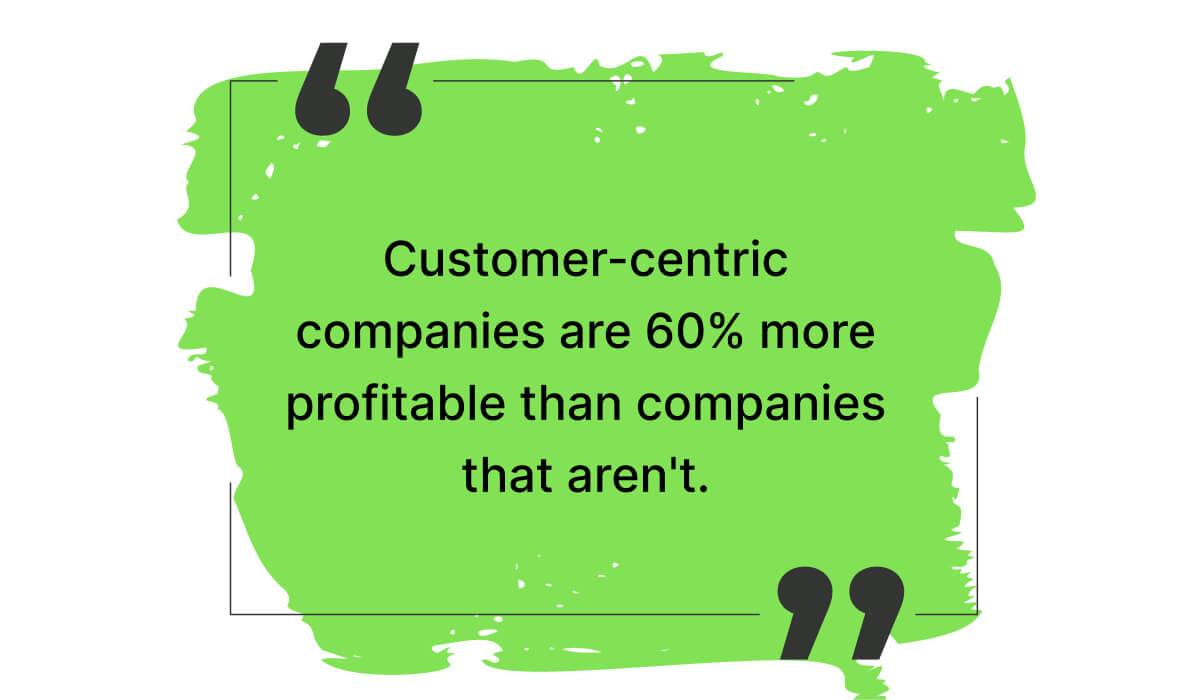
Customer experience takes a long-term perspective, considering interactions that occur over an extended period. It involves nurturing relationships, building trust, and ensuring consistency across different touchpoints. As customers progress through their journey, their needs and expectations can vary significantly. Brands must adapt to these changing needs to maintain a positive customer experience.
The user journey primarily focuses on digital platforms and interfaces, which limits the scope of consideration to the online realm. User journeys revolve around specific interactions within a digital environment, such as navigating a website, using an app, or completing an online form.
For example, we can say about the customer match audience solution that is now the best partner for millions of businesses to connect with the right customers at scale.
Furthermore, user journeys frequently take a shorter-term view, focusing on immediate usability and user satisfaction during a single interaction or session.
User journeys often have a shorter-term perspective, emphasizing immediate usability and user satisfaction during a single interaction or session. Maintaining consistency within the digital interface is crucial in user journeys. Users expect seamless and intuitive experiences throughout their interaction with the platform.
5. Standards and Measurement
The standards for measuring the customer journey look at the whole picture of the customer’s experience, not just individual touchpoints. The key elements may include:
- Tracking all interactions across channels
- Survey customers regularly on their perceptions and satisfaction
- Monitoring customer behaviors and pain points, and so on.
The standards for measuring the customer journey are often holistic and multifaceted, considering various touchpoints and customer interactions.
Measurement metrics:
CLV quantifies the overall value a customer contributes to a brand over the course of their relationship. It’s a critical metric for assessing the long-term impact of the customer journey. NPS gauges customer satisfaction and loyalty by asking customers how likely they are to recommend the brand to others. Surveys and feedback mechanisms assess customer satisfaction at different touchpoints, providing insights into areas of improvement.
Monitoring how customers perceive the brand and its reputation is crucial. Social listening tools can help gauge public sentiment. tracking the rate at which customers disengage or leave the brand provides insights into areas of dissatisfaction.
Standards:
User journey measurement standards are typically more focused on usability, functionality, and user experience within digital interfaces mainly to engage with customers.
It measures the percentage of users who leave a webpage without taking any action. A high bounce rate can indicate a poor user journey. This metric keeps tabs on the portion of users who successfully carry out a preferred action, like making a purchase or signing up.
The amount of time users spend on a website or app can indicate engagement and interest.
Gathering user feedback through surveys, usability testing, and user reviews provides valuable insights into the user journey’s effectiveness.
6. Decision-making Process
The decision-making process is another main point where you will get a contrast between user experience and customer journey.
The decision-making process, also called the user or customer journey, this is essential. It helps us understand how people businesses use products or services and make choices.
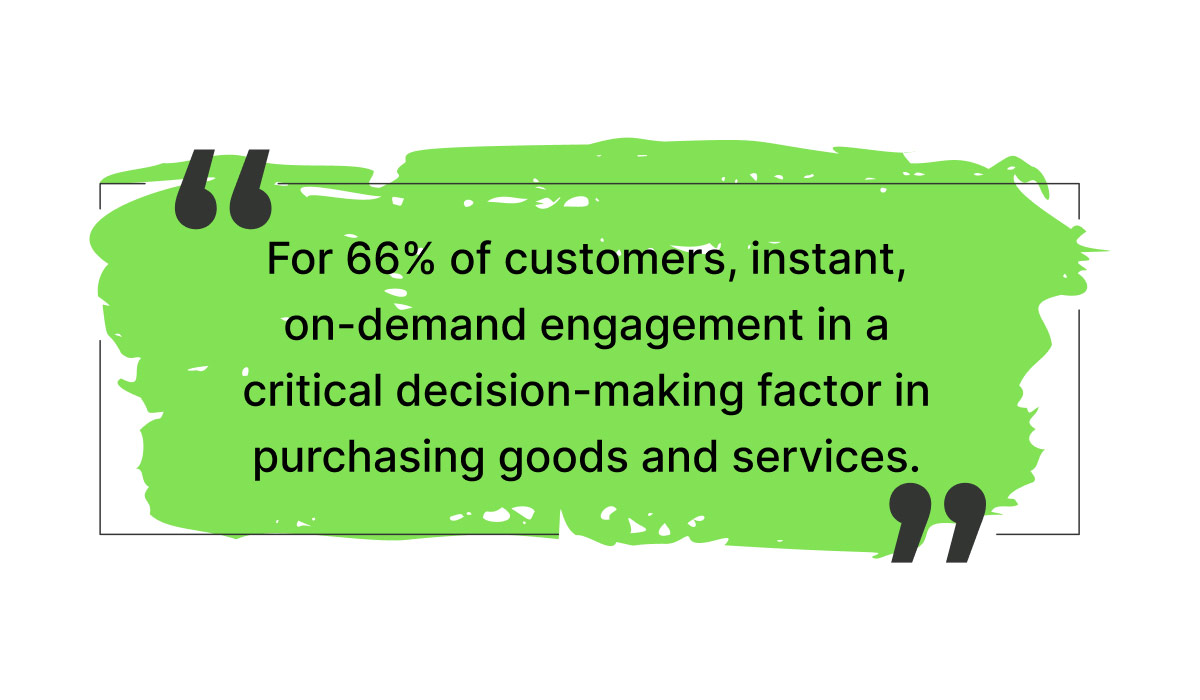
Although these expressions are occasionally used interchangeably, they have different meanings and are frequently employed in various contexts:
Customer Journey:
The phrase ‘customer journey’ is mainly about businesses and marketing. It includes all the times a customer interacts with a product or service—like when they think about it, buy it, and use it.
It usually starts when a customer realizes they need something or have a problem. Then, they look at choices and decide what to buy, and after that, they use the product, give feedback, and maybe become loyal customers.
Marketers and businesses use customer journey mapping to better understand and optimize these stages, with the aim of enhancing the overall customer experience and driving customer satisfaction and retention.
User Journey:
The term User journey is often associated with the design and usability of digital products, websites, or software applications. It represents how a person navigates a digital connection. The first connection point is where it all starts. After that, users navigate, carry out tasks, and may come back or make purchases.
User experience (UX) designers and product developers use user journey mapping to identify pain points, improve usability, and enhance the overall user experience of a digital product.
7. Implementation Focus
The fundamental distinction between the customer journey and the user journey in terms of implementation focus is in the emphasis placed on them and how they are applied in various contexts:
The implementation focus of the customer journey is primarily oriented toward marketing, sales, and overall customer experience management. Businesses and organizations use customer journey mapping and analysis to understand and enhance the entire end-to-end experience a customer has with their brand, product, or service.
Implementation efforts may involve optimizing marketing strategies, improving customer service touchpoints, tailoring product offerings, and building brand loyalty. The primary goal is to maximize customer satisfaction, retention, and lifetime value by delivering a seamless and satisfying experience at every stage of the journey.
The implementation focus of the user journey is centered on the design and usability of digital interfaces and experiences. User journey mapping is used by UX (user experience) designers, product managers, and developers to create user-centric digital products and applications.
In the digital age, we might focus on the user interface (UI), simplify navigation, increase accessibility, and make sure users can accomplish their goals with ease. The primary goal is to create a user-friendly and efficient digital experience that leads to higher user satisfaction, engagement, and conversion rates.
Conclusion
While both customer journeys and user journeys are essential concepts for businesses, they serve different purposes and require distinct approaches. Understanding these differences is crucial for tailoring strategies that enhance both the overall customer experience and the usability of digital platforms.
By recognizing the unique characteristics of each journey, companies can tailor their strategies to better meet the needs of their audience, ultimately driving success in the digital landscape.
Rafeoun Islam
Hi, this is Rafeoun Islam. I am a content writer and I write SEO-optimized content that helps to push traffic to the website. Currently, I'm working on content marketing, social media marketing, and affiliate marketing.
You Might also like

Quality product content. In your inbox. Every week.
User journey map: the ultimate guide to improving ux.
.webp)
Skip to section:
What is a user journey map.
A user journey map is a visual presentation of how your customer moves through your marketing and sales funnels. Much like directions guide a driver’s progress through physical space—a user journey map tracks a customer’s progress through time.
Your customers take a trip from unaware all the way through to being a paying customer. User journey maps are an attempt to capture each potential customer touchpoints along the way, giving you roadmap-like view of customers’ experience with your brand and product.
Creating a user journey map
Creating a user journey map forces you to identify potential points of friction and opportunities for UX improvements by experiencing your product from the customer’s point of view.
Before you can map the user journey, you need to gather the appropriate data. You’ll need to pull this data from multiple sources to get the best sense of user interactions. Your marketing metrics will detail how customers are brought in.
Meanwhile, your product and behavioral data will enlighten you as to how your customers are using your product. User research can provide a great deal of event-to-event analysis of the customer journey. Market research such as customer interviews and surveys can fill in any gaps in the buyer’s journey and help determine the perceived quality of each interaction.
The benefits of user journey mapping
Simply creating user journey maps often reveals insights into your customers’ experience with your product. These completed user journey maps can then be used to enhance:
UX improvement
It’s easy to become nearsighted as you scrutinize your UX. It’s understandable: you’ve been staring at your product for a very long time. However, prospective customers are not likely to be as empathetic. A single snag in their experience can derail an otherwise positive process. If your customer support team is dealing with reports of a steep learning curve, your journey maps may help rectify the situation.
A user journey map allows you to visibly identify pain points in your UX design that may have escaped you during development and in-house testing. Furthermore, a user journey map should be embraced by the entire product team as a way to triple-check your work and vet product usability. Someone else on your team may identify a potential problem area that you were unable to see yourself.
Product and feature adoption
A frictionless UX lends itself to stellar onboarding. Your analytics and market research will reveal to you the critical events that lead customers to fully engage with your product and features. When your user journey is laid out visually before you, it’s easier to identify ways to shorten the distance between signing customers up and converting them into long-time users. For example, let’s say you know that filling out a user profile doubles the rate of product adoption. An analysis of your user journey map reveals that there are 3 steps that occur between initially signing up for your product and filling out a user profile. Instead of hoping that you don’t lose your newly onboarded customers before they fill the profile out, you could add the critical profile fields to the sign-up form and set your customers up for immediate success. This same process also helps pinpoint opportunities to direct customers to underutilized features. Features are designed to enhance overall product engagement and increase retention, but some excellent features can be buried within a UI and thus go unused. Mapping their journey would reveal the best places within their journey to send in-app messages or emails highlighting the wish list feature and describing its benefits. This helps you clearly draw the line between certain features and customer pain points.
MIND THE MAP
Your user journey map + appcues = 👋 low feature engagement.
- Use our product adoption platform to improve feature adoption
- Increase feature usage w/ in-app guidance and education

Company-wide empathy
Team members from every department benefit from understanding the customer needs. Understanding potential frustrations builds empathy for customers and keeps their issues in perspective. It allows others to see how a customer’s experience affects their likelihood to upsell, churn, or even advocate for the brand. Wisdom can be trapped in departmental silos. The insights of others outside the product management team are integral to creating a fully realized user journey map. Meeting with key stakeholders within your company is a critical component of the research stage of mapping as they can provide outside insights that the product team can’t gather analytically.
Components of an effective user journey map
So, what actually goes into an effective user journey map? That depends who you're asking. If you're asking us , we'd say there are a few key traits to them all.

1. Protagonist creation
Different folks use varying terms to describe the individual who actually goes through the user journey. Worse yet, some companies imagine themselves as the heroes in their own stories. In reality, the character at the center of this odyssey is the user—and that's why we give them the title of "protagonist" here.
To chart a user's journey, you have to understand their point of view. The protagonist in a user journey map isn't unlike a buyer persona. Who they are and what they're trying to accomplish will make their journey unique. That's why it's helpful to imagine them as protagonists in a story. Create a narrative arc around each user type to start user journey mapping.
2. Journey stages
In a story, a protagonist experiences rising action, complicating circumstances, and, hopefully, resolution. Each of these different parts are what make novels and Hollywood movies emotionally resonant. They're also at the heart of the user journey.
The stages to your protagonist's' (user's) journey will vary depending on what you sell and how they use it. In the case of B2B software, the journey stages might roughly track against the following steps:
- Negotiation
- Adoption/value perception
3. User thoughts and actions
This one is pretty straightforward: what is our protagonist feeling and doing at each step of the user journey?
Putting yourself in the shows of your users as they navigate the process of using your product is a useful exercise because they help you understand where things can improve or where the experience is suboptimal, which leads us to our next points...
4. Friction/pain points
Where are users running into problems? What's stopping them from getting the best overall experience? Answering this question helps you identify the opportunities to improve your user experience throughout the journey. Whether your users are running into problems during the purchasing process, onboarding, or while actually using the product, taking a good hard look at the stumbling blocks will only make your user journey more seamless.
How to build a user journey map
The actual contents of an experience map will vary depending on what you’re trying to achieve, but there are several features common to most versions: phases, experience qualifiers, and interactions. Keep in mind that there are many different types of user journey maps that each address specific purposes. For this example, we'll build a basic type called an experience map.
1. Outline your phases
A user journey map is a single quadrant of a coordinate graph. Each interaction your users have is given a visual representation as a point on this graph. Before you start logging these points, you need to define the values for each axis. The horizontal axis of your map measures the time and sequence of your customer journey. The point furthest to the left of the graph should be the first interaction, and the furthest to the right should be the last interaction. Seeing as how a customer’s journey from discovery to power usage might contain dozens of points, it’s best to divide the horizontal axis into multiple phases. Commonly, user journey maps for products are segmented into the following phases:
- Consideration
- Adoption/ongoing usage
Visually, the first stage of building a journey map template might look something like this:

Adding phases to your map delineates the different stages of a customer’s life cycle. A customer experiences your product in a specific sequence. They can’t use your product without first becoming aware of it. Setting up the correct framework of stages establishes how each touchpoint is affected by the one preceding it and affects the event that follows.
2. Identify experience qualifiers
Not all interactions with your product are equally positive. Onboarding struggles or software bugs are downright frustrating. Thus, the vertical axis of your user journey map should track the quality of each interaction. Drawing a line between good, bad, and even neutral experiences will help you identify potential problem areas (and solutions!) upon later evaluation. Such a user journey map would look something like this:

3. Plot user interactions
With your life cycle phases fleshed out, you can start adding interactions to your map. It’s important to remember that you’re not trying to map out every possible user interaction of every possible user. Instead, you’re trying to brainstorm how a particular user persona is likely to interact with your product. For each customer persona you’re attempting to understand, you should create a new customer journey map. Keep in mind that customer experiences occur across sales and marketing channels. These omnichannel interactions with your brand include:
- Social media platforms
- Email campaigns
- Digital advertising
- Your website
- Your product itself
- In-app modals
For best results, your user journey map should note the channels in which these interactions happen to ensure that you engage with the user in the right place. For example, if a customer talks to a pre-sales agent, you should note if that’s expected to happen over the phone or through an online live chat.
Once your initial touchpoint is established, you can begin to move through the phases in logical order. As you add each event to the graph, determine whether each event is positive, negative, or neutral, and log them on the vertical axis accordingly.
Done correctly, your finished user journey map should look something like this:

Build better customer experiences with user journey maps
User journey maps aren’t one-size-fits-all. Many variations on the core concept exist to fit your needs. Perhaps you just want to zoom in on a particular phase of a customer’s life cycle. You might not even want to map your customer’s current experience at all and instead use a future-state map to flesh out their journey through the next iteration of your product. The dynamic nature of a user journey map only increases its value to your product strategy. Your needs and objectives differ from every other company. You can read a book on customer experience to gain general UX guidance, but a user journey map allows you to capture a snapshot of the unique relationship between your product and your customer base. The mapping of your user journey eliminates so much of the guesswork from strategy and innovation. Think back to your friend who gives terrible directions. You can continue to rely on their bad directions every single time you embark and slowly go mad. Alternatively, you could do a little research yourself ahead of time and build your own accurate map that clearly shows the way forward.
And if you use Appcues, you can effectively build user journey maps within the platform to better plan and visualize in-app experiences. If you're intrigued, learn more about Journeys or start a free trial to embark on your own journey of building exceptional experiences.

Why Medallia
Learn how partnering with us can transform your business — for both customers and employees.
Success Stories
See results from brands like yours
ROI Calculator
Optimize your program spend
Enterprise-Grade Platform
Explore all features and benefits
World-Class Service
Get support for crucial operations
Global Impact
Impact the world beyond your own
Partner Network
Access approved, localized expertise
Medallia Platform
Explore how experiences come together in one powerful platform.
Comprehensive Feedback Capture
Collect every signal for more meaningful data
Administration
Run complex, global programs with self-service
Role-Based Reporting
Close the loop and drive action quickly
AI & Analytics
Uncover essential insights from every interaction
Integrations
Easily share data across systems and teams
Expand your program with flexible pricing
Enterprise-Grade Security
Keep your business data safe and compliant
Financial Services
Life sciences, manufacturing, public sector, restaurants, technology & services, telco & media, travel & hospitality, customer experience.
End-to-end customer experience management and orchestration
Customer Experience Management
Digital experience, experience orchestration, personalized messaging, employee experience.
Employee listening and activation solutions
Employee Listening
Employee activation, contact center.
Improve agent engagement and optimize service quality
Conversation Intelligence
Agent coaching, quality management, intelligent callback, market research.
Expert research strategy, design, analytics, and deliverables
Consumer Intelligence
Research strategy & services.
Get guidance from leading experience professionals across a variety of mediums.
Customer Stories
Event calendar, medallia xchange.
Whether a tenured Medallia pro or a burgeoning advocate, there’s plenty to learn.
Training & Certification
Medallia user group, experience 101, resource library.
Our team is ready to support you with knowledge, help, and new enhancements.
Knowledge Center
Experts on demand, contact support.
Experience 2024
See the exciting new releases from the keynote.
- Español/Europa
- Español/América Latina
- Português/Brasil
How to Optimize Customer Journey Touchpoints (with Examples)

Your customers’ journeys from awareness to advocacy may be measured by how much they buy and how much they spend, but they’re defined by the many interactions they have with your brand along the way. These interactions, which we refer to as “ touchpoints ,” represent the various ways in which customers engage with your company as they learn about a product or service and make a decision to buy it, stick with it, and talk about it.
Savvy business people like yourself know that a smooth sailing customer journey entices customers to buy a product, purchase it again, and recommend it to their friends and colleagues. On the flipside, friction can discourage action, depress sales, and lead to churn. To optimize your customer journey for a better customer experience , focus on what you can control — the touchpoints. Here’s how to get started.
Understanding the five stages of the customer journey
Before you can fine tune the details, you should first outline your customer journey map in broad strokes. Although the particulars of a customer journey can and will look different for every customer, product, or service, there are generally five phases of the overall customer journey.
This encompasses the ways in which customers become aware of your brand — including via advertising, organic social media, word of mouth, and more.
Consideration
This phase is when prospects research your product or service, ask questions, seek information, and consider alternatives.
Purchase / Conversion
The purchase or conversion phase entails all of the interactions customers have once they convert. That could be going through the process of opening a new bank account, downloading an app, or completing a transaction.
Post-Purchase / Conversion
The post-purchase phase encompasses interactions and experiences customers have with a brand after the initial purchase or conversion, including seeking out customer support, providing customer feedback, renewing a subscription or plan, and more.
Loyalty and advocacy
This phase is reached when customers renew a membership or plan, review a company’s products or services, or recommend the brand to others through direct or indirect feedback.
Customer touchpoints and the journey map
If the five phases of the customer journey are the geographical boundaries on your map, then the touchpoints are the points of interest. Note that these touchpoints can entail things you do and don’t want your customers to experience, and some touchpoints may or may not be directly under your control. The point of conducting a modern customer journey analysis is to identify where and how you can reduce friction.
To start, outline the universe of experiences your customers might have with your brand. You can break these down into online and offline interactions. Here are some examples to consider.
Online touchpoints
- Websites or landing pages
- SMS and messaging apps
- Social media
- First- and third-party reviews
- Digital customer support channels (livechat, chatbots, etc.)
- IoT devices
- Digital ads
Offline touchpoints
- Phone or IVR interactions
- Contact center phone calls
- Storefront or in-person interactions
- Events or conferences
- Direct mail
- Offline advertising
Building the customer journey map
There are many different customer journeys you can map, but the trick is outlining the most relevant ones. For example, you may have some customers entering your funnel through social media ads, while others come directly to your website after seeing an offline commercial. Others may read a review on a third-party site, while some may find you through a search engine.
Optimizing touchpoints starts by organizing these interactions along a specific journey and aligning them to the appropriate journey phase. From there, you can build a framework to understand friction, drop off, and churn. Many customer experience teams will organize these touchpoints by categories, such as pre-conversion, conversion, and post-conversion or post-purchase, but you can tailor your customer journey map to your specific industry or niche.
Common challenges across customer touchpoints
There are a few common — yet difficult to spot — hurdles in customer journeys that can cause undue friction. Here are some to look out for as you conduct your analysis.
Inconsistent messaging
Minor inconsistencies are forgivable, but overt deviations can lead to customer frustration and even harm your brand reputation. It could be as simple as your company’s chatbot or call center providing a different answer to a question than what’s listed on your website or as complex as deprecated materials being circulated by an out-of-sync sales team.
Siloed touchpoints
Similarly, experiences that are siloed and disconnected from others can confuse or misdirect customers. If the experience at a kiosk or event booth for your brand differs from that of your company’s website, demo call, or product page, your customers can feel misdirected or deceived. Likewise, if they have a great experience with a salesperson but the support experience is less than desirable, it can lead to churn and negative reviews.
Unnecessarily complex buying journeys
In some industries, when a customer is ready to buy, they’re ready to buy. Unnecessary extra login screens or form fills, or, in more complex environments, extra meetings or line items in a contract, can cause significant friction and a breakdown of a conversion altogether.
Five strategies to optimize customer touchpoints
Here are key strategies and tools you can use to enhance and maximize the effectiveness of each touchpoint.
Build cohesive, omnichannel experiences
Disjointed and siloed touchpoints can cause a lot of friction. Ensuring consistency between online and offline experiences , by optimizing experiences across channels and ensuring a connected tech stack, can go a long way.
Deliver personalized customer experiences
Personalize messaging, interactions, content, products, and services for the individual customer where possible to increase customer loyalty and share of wallet .
Implement real-time feedback monitoring
Instead of viewing each journey as a snapshot in time, monitoring customer feedback in real time enables you to dynamically improve the customer experience as it’s unfolding in the moment.
Get proactive with customer behavior analysis
Analyzing customer behaviors and customer signals can help you stay ahead of problems. If customer feedback and reviews suggest there’s an issue, ongoing analysis can help you solve it before it gets out of hand.
Leverage a customer experience management platform
Finally, consider investing in a customer experience management platform for a better overall experience across your customer journey.
Build better experiences with Medallia
Streamlining every interaction with your brand is possible, with the right tools to optimize your customer journey touchpoints.
Medallia offers a suite of advanced solutions for managing digital, in-person, and phone-based customer interactions, enabling teams to provide better experiences, reduce the burden on the contact center, and strengthen customer retention and satisfaction rates.
To learn how your organization can benefit from Medallia’s customer experience management platform, speak with a Medallia expert today.

RELATED POSTS

What Is Personalization? Meaning Defined

This Summer’s Hottest Fashion Trend: Your Personal(ization) Style!

Exploring the State of CX Personalization
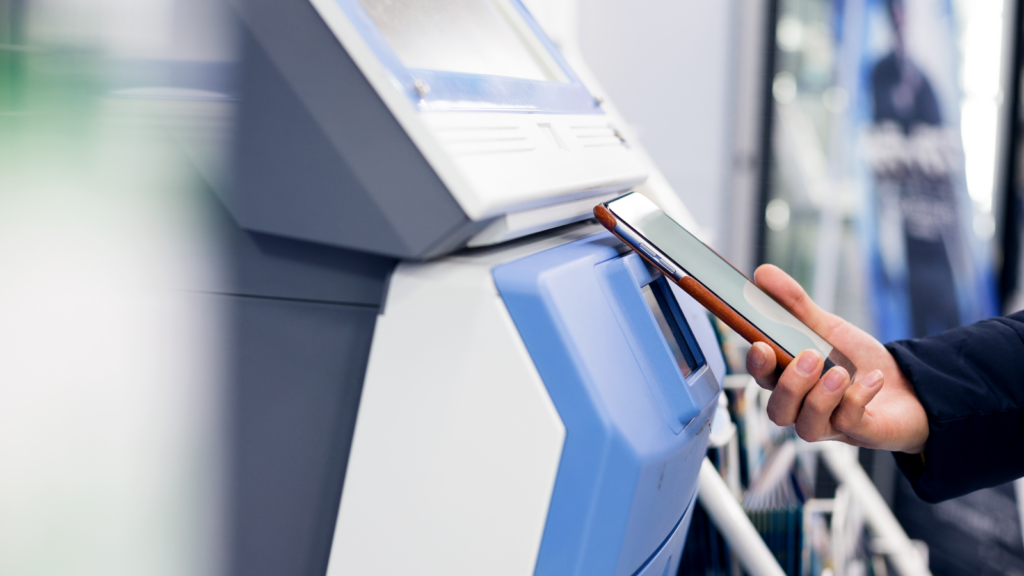
A Deep Dive into the Benefits of Customer Self-Service Systems

Salesforce is closed for new business in your area.

COMMENTS
A user or customer journey, sometimes visualized as a journey map, is the path a person follows as they discover a product, service, or brand, learn about it, consider spending money on it, and then make a decision to purchase—or not. Not every user journey ends in a conversion, but it is typically the goal. Creating a customer journey map ...
A user journey is the experiences a person has when interacting with something, typically software. This idea is generally used by those involved with user experience design, web design, user-centered design, or anyone else focusing on how users interact with software experiences. It is often used as a shorthand for the overall user experience ...
How to create a user journey map. We've outlined what a user journey map is, why you might want to create one, and what elements you should include. Now let's go through the basic steps to create your own user journey map. 1. Define the scope. Creating a helpful user journey map starts with defining your goals.
How to read a user journey map 5 key user journey map phases 2 types of user journey maps—and when to use them Current-state user journey maps Future-state user journey maps How to make a user journey map in 5 steps Step 1: Define user personas and goals. Step 2: Identify customer touch points. Step 3: Visualize journey phases.
A user journey is a high-level view of the user's interactions and experiences throughout their engagement with a product or system. It focuses on the user's emotions, goals, and key touchpoints. User Flow. User flows, on the other hand, are more detailed and specific. They outline the precise steps a user takes to complete a particular task or ...
User journey: (Or customer journey) ... Definition: A user flow is a set of interactions that describe the typical or ideal set of steps needed to accomplish a common task performed with a product. Compared to a user journey, the underlying goal of a user flow is much more granular, and the focus is narrowed to a specific objective within one ...
A user journey consists of several key components that collectively define the user's experience throughout their interaction with a product, service, or system. These components help in understanding and improving the overall user experience. Here are the key components: 1. Touchpoints: These are the specific interactions or points of ...
The user journey describes the pathway a user takes during their interactions with a product, brand, or service. The nature of that experience will vary depending on the product in question. However, most user journeys follow a similar pattern. They consist of several stages with a beginning, middle, and end. Journeys that encompass a marketing ...
User Journey. 1. : describes the pathway a user takes during his or her interactions with a product, brand, or service. // The experience of a user journey varies depending on the product — but each consists of several stages with a beginning, middle, and end. 2. key advantages of using this:
The User Journey Map is a story that visualizes actions on a timeline. It is created in many variants, but in most cases, it is a modification of the basic model, consisting of 5 elements. The top layer includes a clearly defined user, a scenario of his journey, and the goals he intends to achieve. The middle part of the map is composed of a ...
User journey mapping is a process that involves tracking the user's journey from the initial point of contact to the end goal. It is a way of understanding how a user interacts with a product or service, and can provide valuable insights into the customer experience.
A user journey represents a sequence of events or experiences a user might encounter while using a product or service. A user journey can be mapped or designed to show the steps and choices presented as interactions, and the resulting actions. A user journey can be mapped in order to better understand the flow and make improvements, or it can ...
The user journey can also help Scrum teams define the scope of a sprint and set sprint goals, ensuring that each sprint delivers value aligned with the user experience. Kanban: Kanban's visual nature aligns well with user journey mapping. User journey maps can be represented on the Kanban board to provide a clear overview of the entire user ...
User journey maps have the following five components: 1. The users. The users are the customers detailed within a customer journey map. Clearly defining your user's profile helps you understand who the journey map is for and how to tailor the journey map to fit the user as precisely as possible.
User journeys map out every step to reach a goal. User journeys are the step-by-step journey that a user takes to reach their goal. This journey will often consist of a number of website pages and decision points that carry the user from one step to another. The user journey is used to map out the current journey a typical user might take to ...
The steps below will enable you to create a user journey map that anticipates your visitors' needs and how they browse it: Get an app to help you map out your user's journey. Figure out who your ideal users are. Create user personas. Define the scope of the user journey map.
A user journey is a series of steps (typically 4-12) which represent a scenario in which a user might interact with the thing you are designing. They can be used for 2 main things: Demonstrating the way users currently interact with the service / website / product. Demonstrating the way users could interact with the service / website / product.
In a sense, the terms user and customer are interchangeable. A customer is a user, and the most common user of your website is a customer. Alternatively, customer journey mapping encompasses every conceivable interaction a customer could have with your business, while the user journey can be viewed more narrowly as the customer's digital experience—how they engage with your website or app ...
Reducing churn rate for paying customers. 2. Build personas and define your user's goals. Develop at least one persona you'll use as your primary model. The more specifics you create about the behavior of your different users across the personas you identify, the better and more detailed your user journey map will be.
User Journey Defined. User journey refers to the path or sequence of screens and interactions that a user goes through when using an application, from initial download throughout their time using the app to achieving their goal. The user journey in a mobile app typically involves navigating through different screens, interacting with various ...
A user journey map helps you turn users into customers and retain them. To create a user journey map, you need to follow six steps: set an objective, define a user persona, define the user persona's journey, identify milestones, fill in touchpoints and use a journey mapping tool. Users will interact with your product differently, so you need ...
Gathering user feedback through surveys, usability testing, and user reviews provides valuable insights into the user journey's effectiveness. 6. Decision-making Process. The decision-making process is another main point where you will get a contrast between user experience and customer journey.
A user journey map is a visual presentation of how your customer moves through your marketing and sales funnels. Much like directions guide a driver's progress through physical space—a user journey map tracks a customer's progress through time. Your customers take a trip from unaware all the way through to being a paying customer.
What stands out about this journey map template is that it has a space for describing the specific stage of the customer, which you can also use to write associated actions. There's also a star rating row that can help sum up the customer experience at each stage. 6. Business Software Customer Journey Map Template.
Optimizing touchpoints starts by organizing these interactions along a specific journey and aligning them to the appropriate journey phase. From there, you can build a framework to understand friction, drop off, and churn. Many customer experience teams will organize these touchpoints by categories, such as pre-conversion, conversion, and post ...
Marketing automation defined. With marketing automation, businesses can target customers with automated messages across email, web, social, and text. Messages are sent by the technology, according to sets of instructions called workflows. Workflows may be defined by templates, custom-built from scratch, or modified mid-campaign to achieve ...